Lecture 5 Energy Systems and Energy Conversion Technologies
February 24, 2025
Energy systems
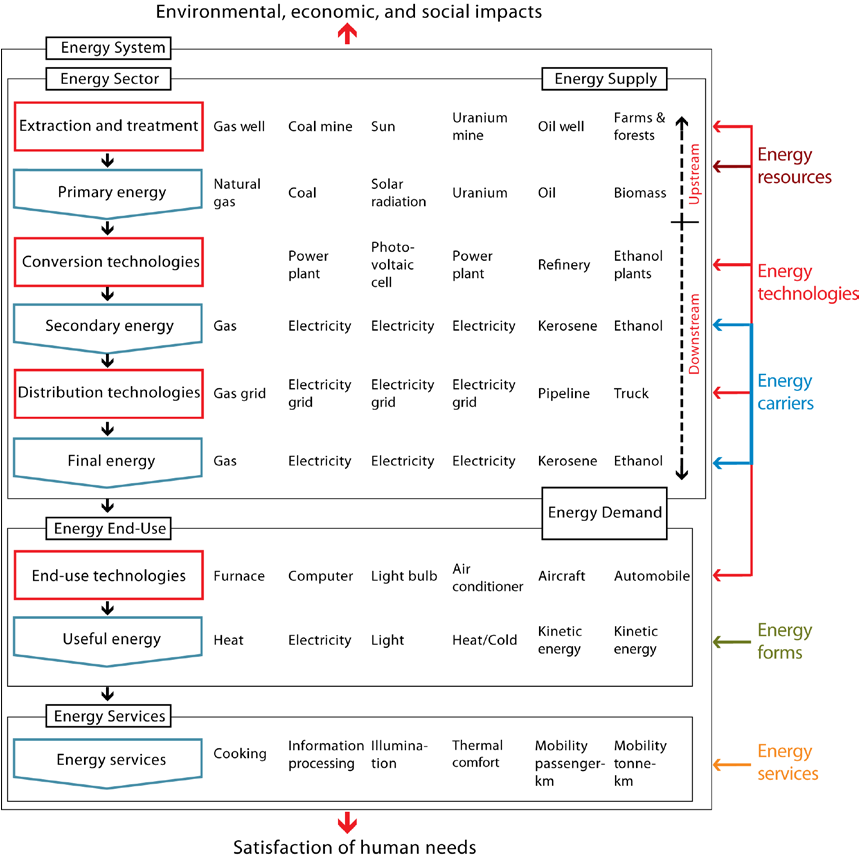
Source: IIASA, Energy Primier
Resources vs reserves
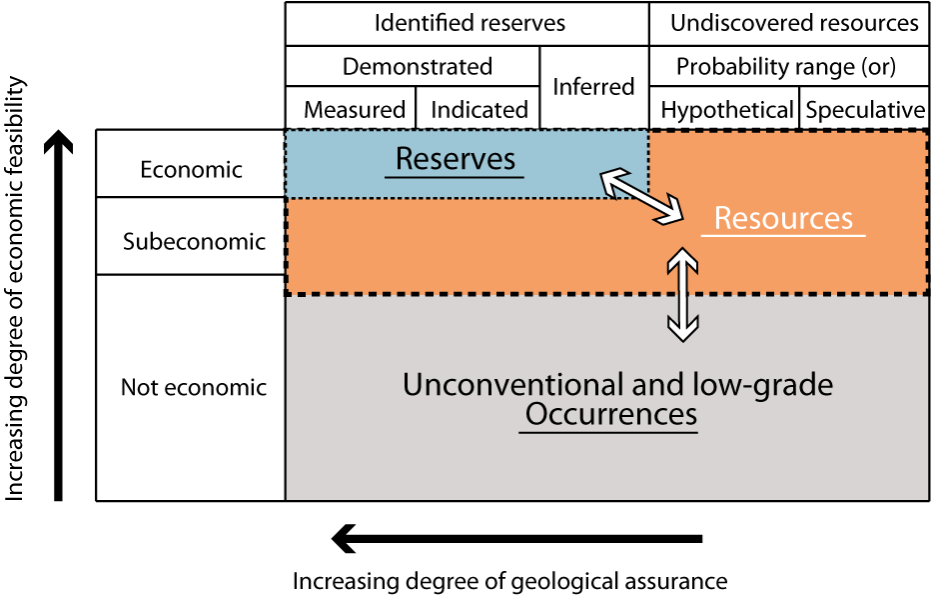
Source: IIASA, Energy Primier
Energy and their conversions
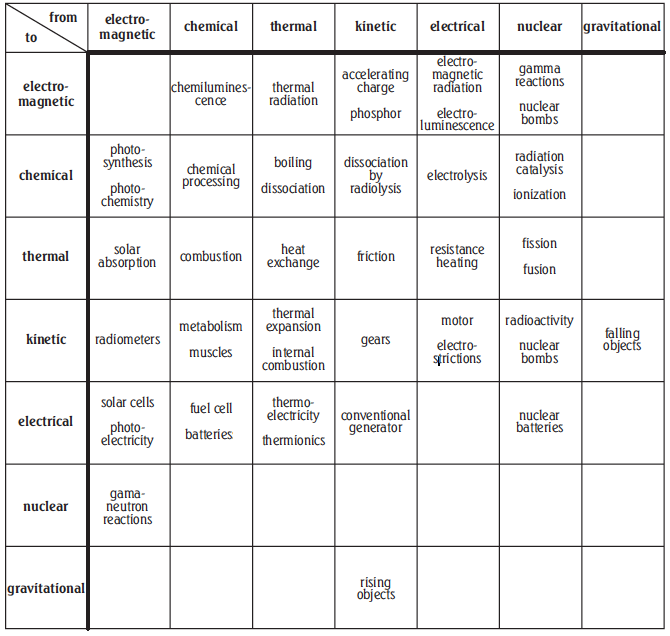
Source: Smil (2017)
Global energy flow
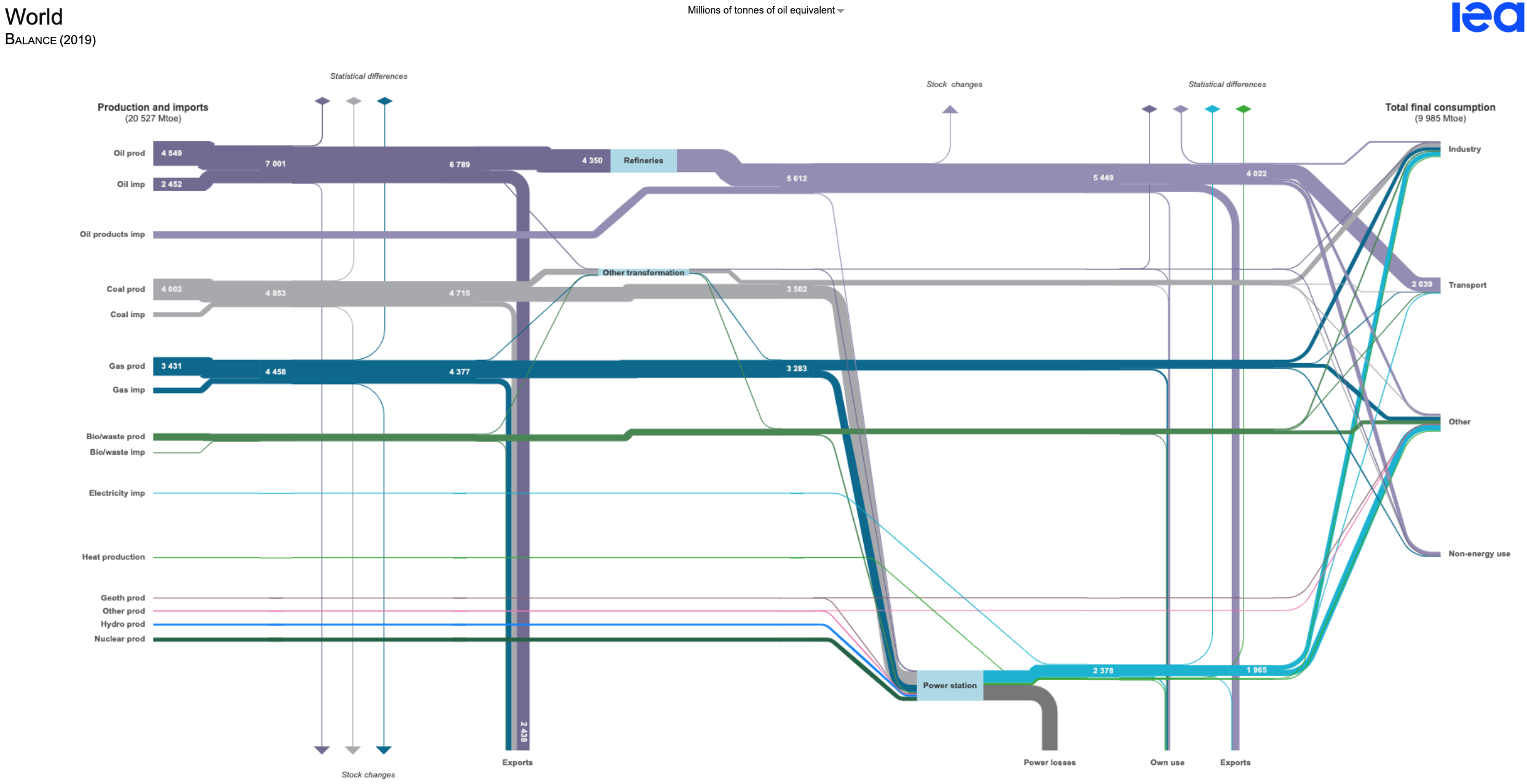
Source: IEA
U.S. energy flow
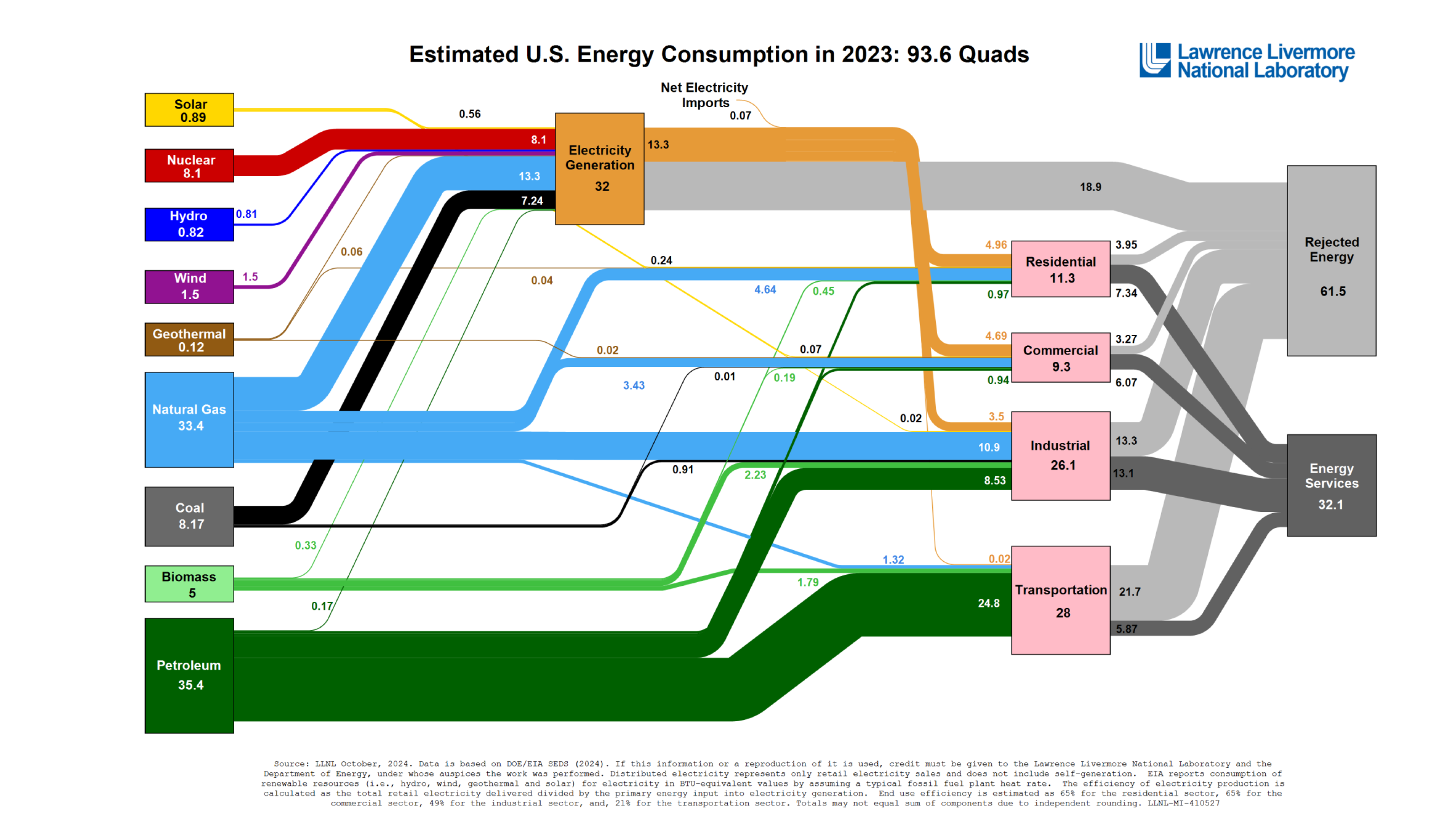
Source: LLNL
Energy by supply

Source: Our World in Data, Energy Mix
Energy end-use by sector
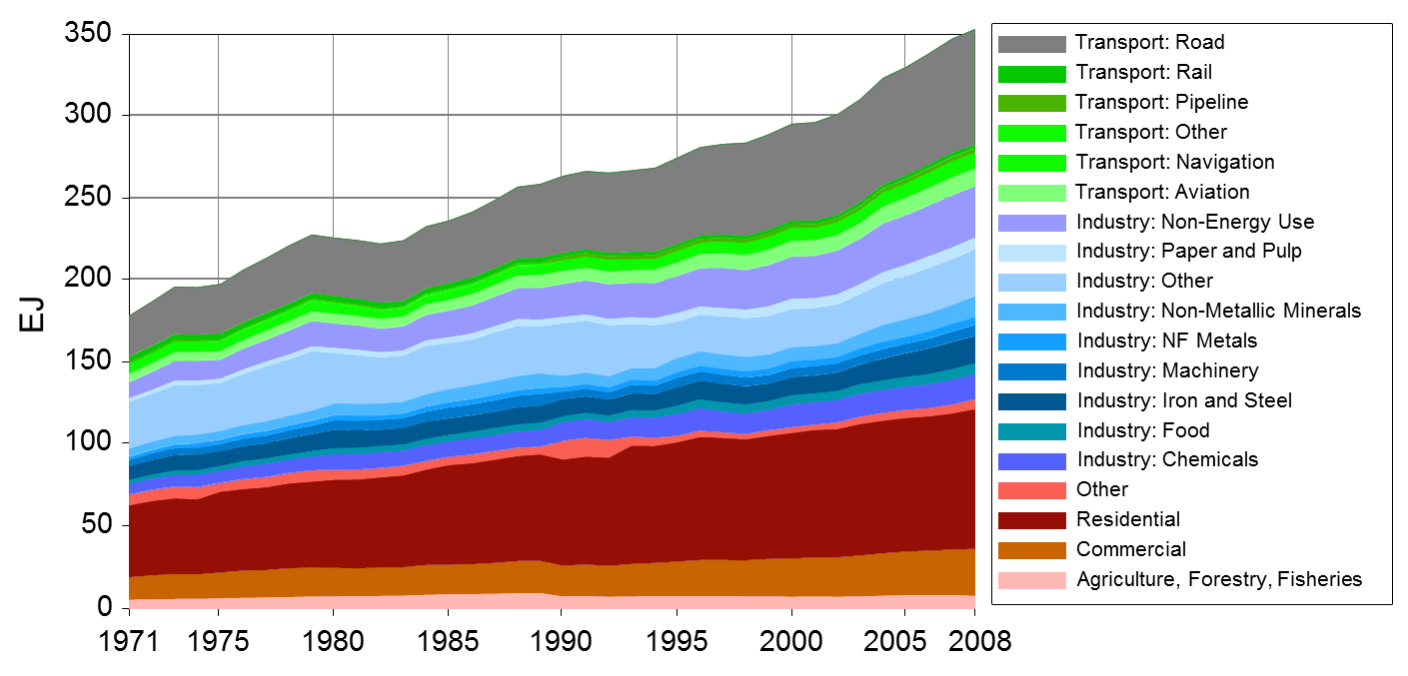
Source: IIASA, Energy Primier
Matching supply and demand
It operates like “magic”
But relies on massive infrastructure, markets, and regulations
- Deliver service at the right time, location, and price
- Meet safety, reliability, and environmental standards
- Increasingly disrupted by political economy and climate change
Solution is usually location and temporal based
Electrify eveything, where are we now
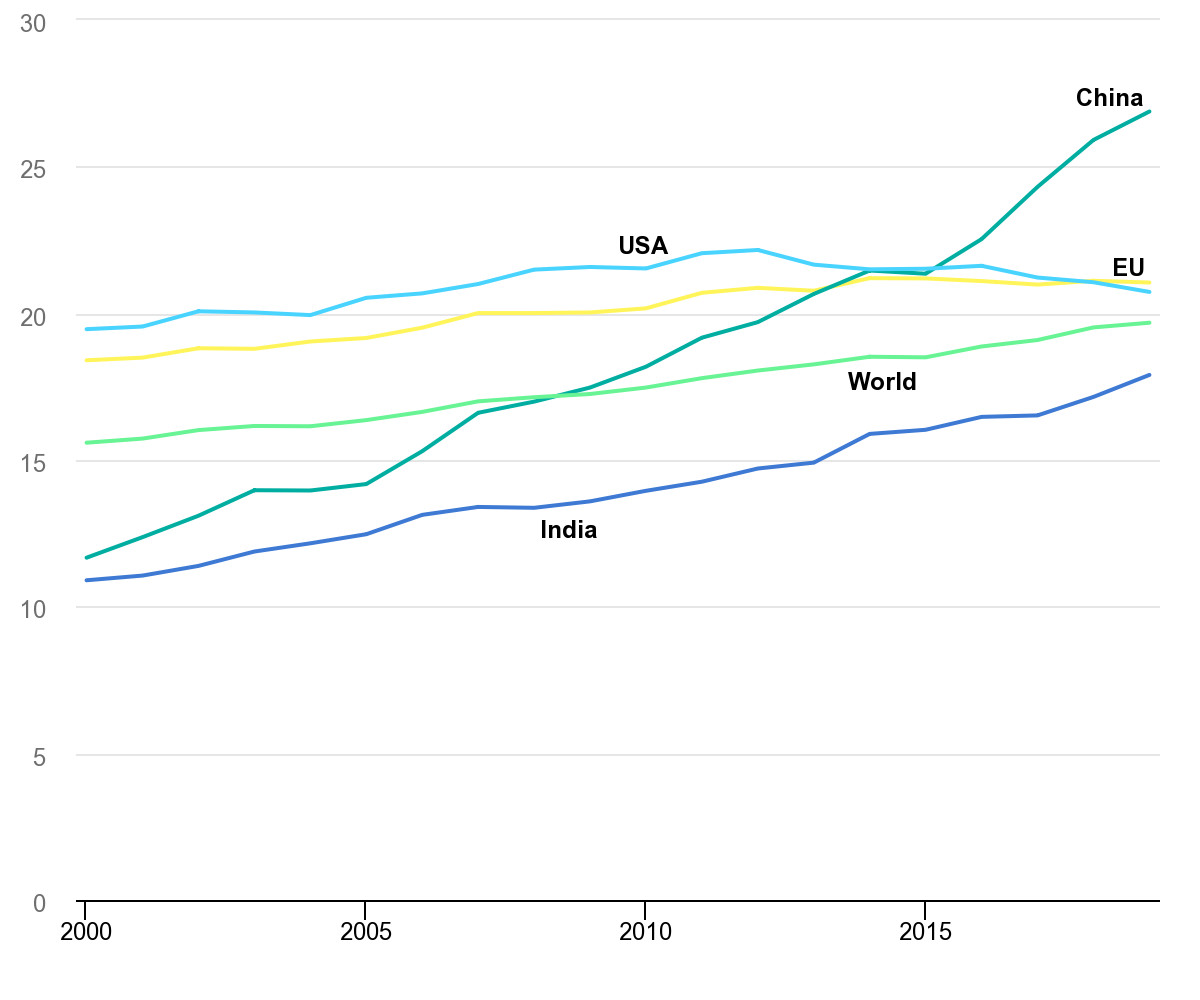
Source: IEA
Electrify eveything, net zero
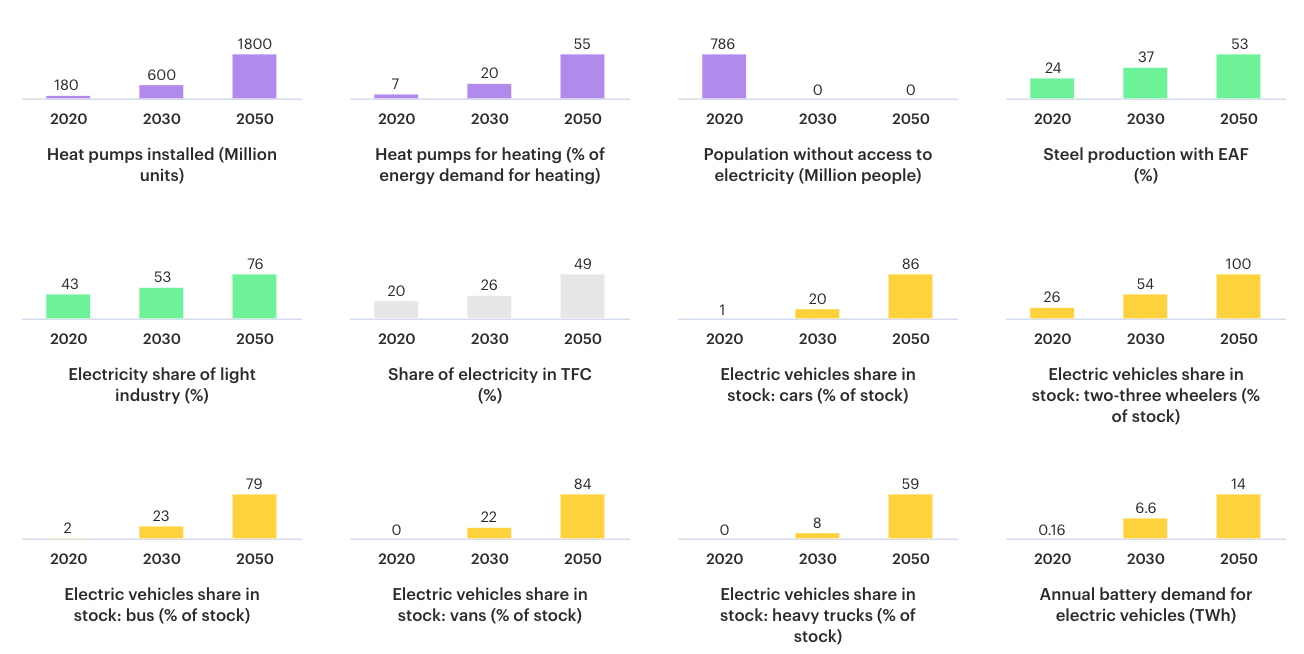

Energy efficiency
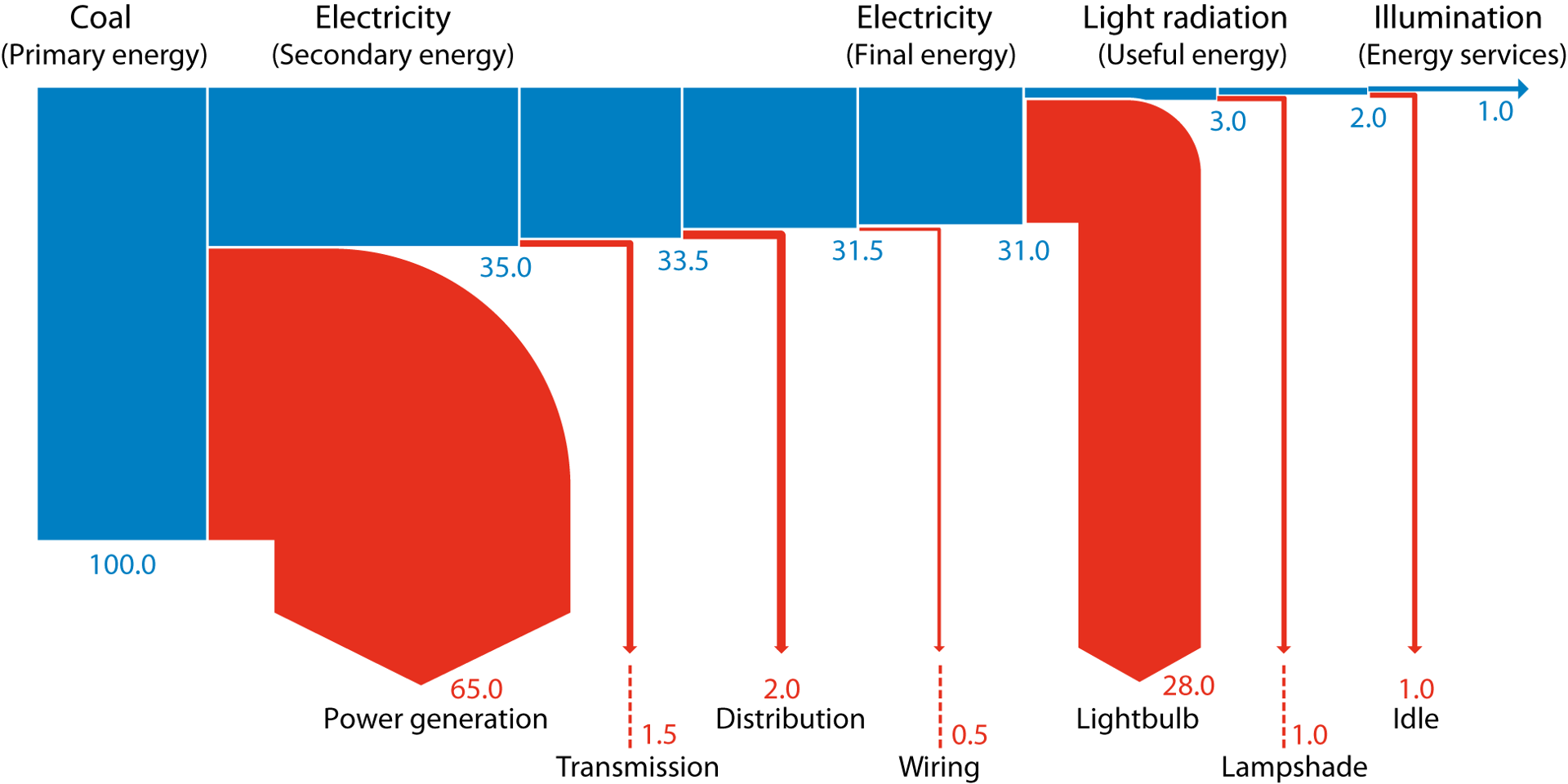
Source: IIASA, Energy Primier
Electric efficiency vs fossil efficiency
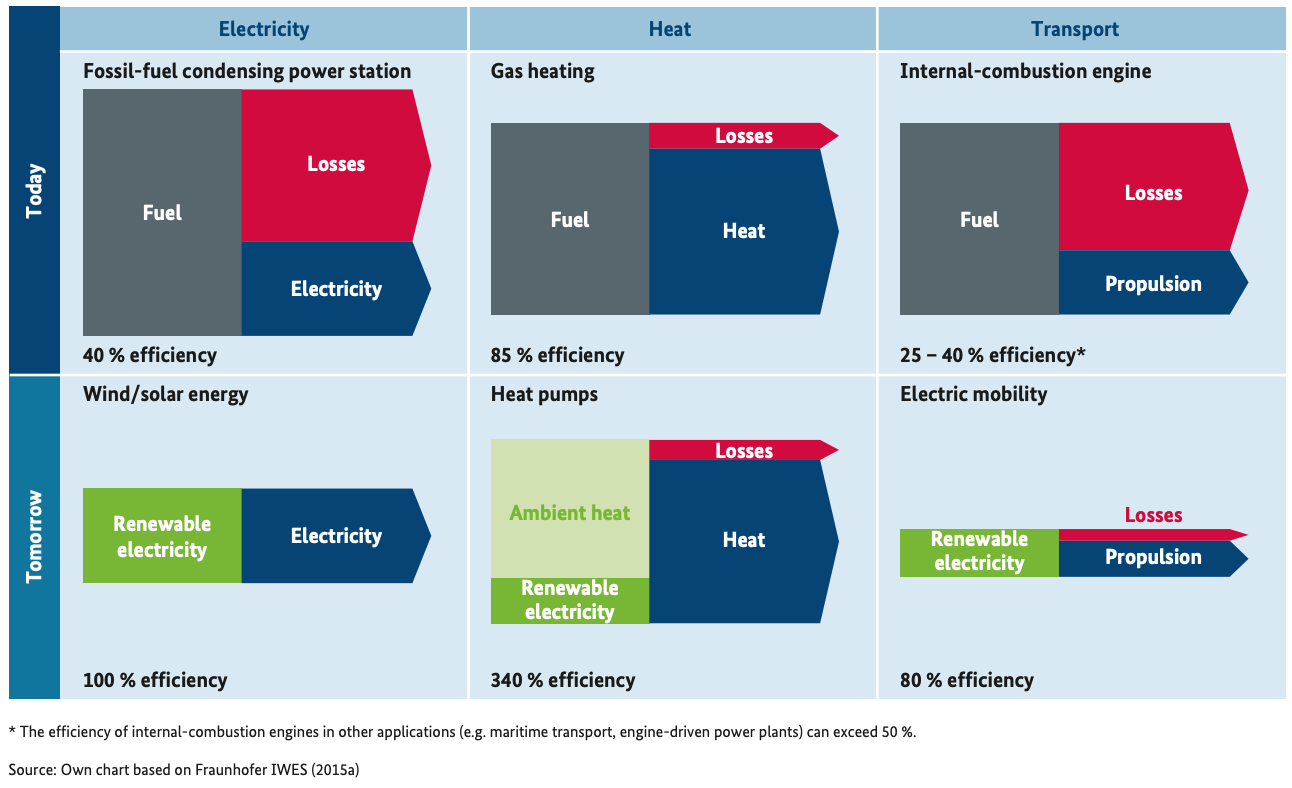
Source: BMWi (2015)
Milestones for long-term energy transition
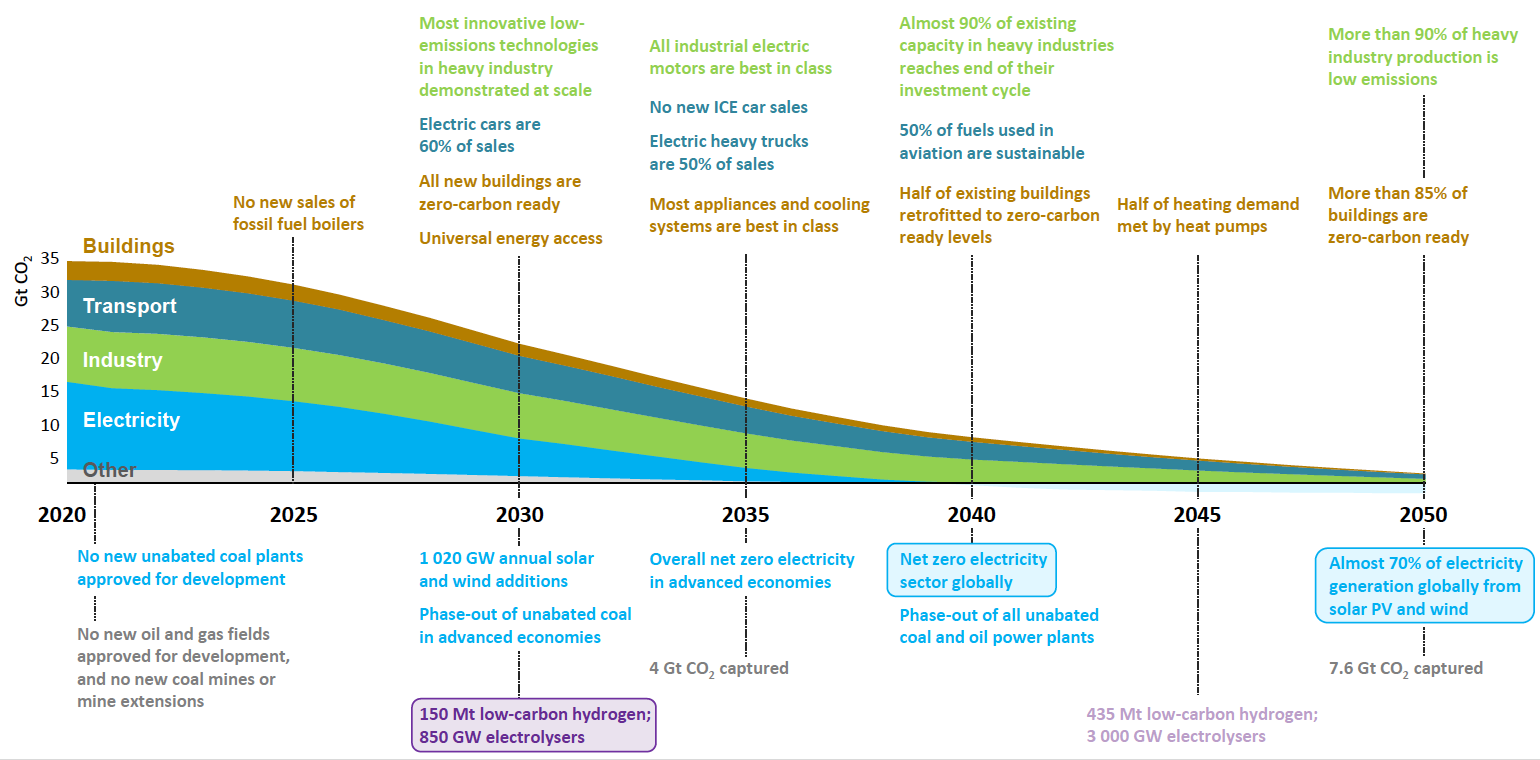
Source: IEA (2021)
NYS Climate Leadership and Community Protection Act

35%-40% of the benefits of NY CLCPA investments must flow to disadvantaged communities
U.S. shale gas revolution
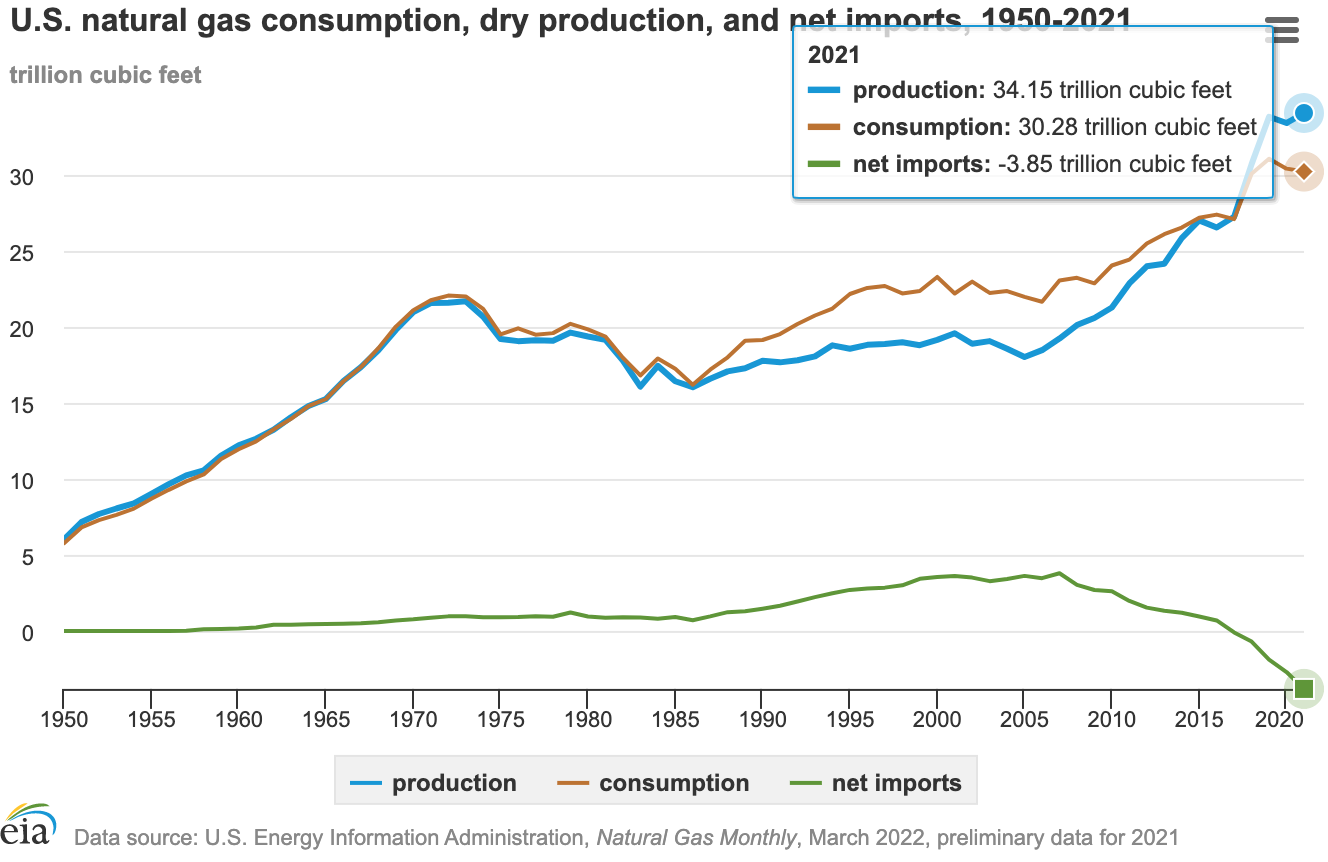
Source: EIA
Renewable revolution: achieving grid parity
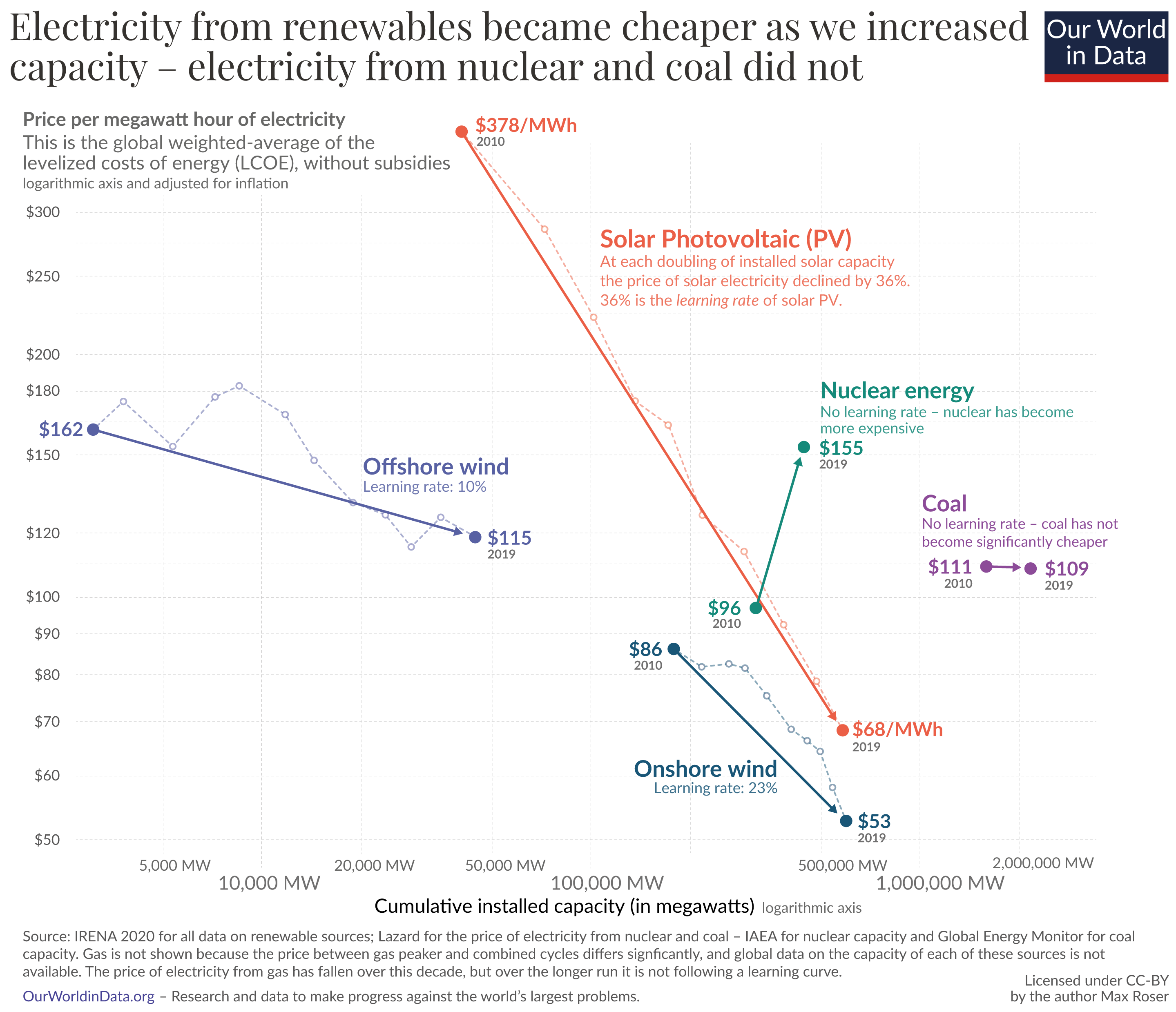
Source: Our World in Data
Renewable revolution: solar and wind taking off
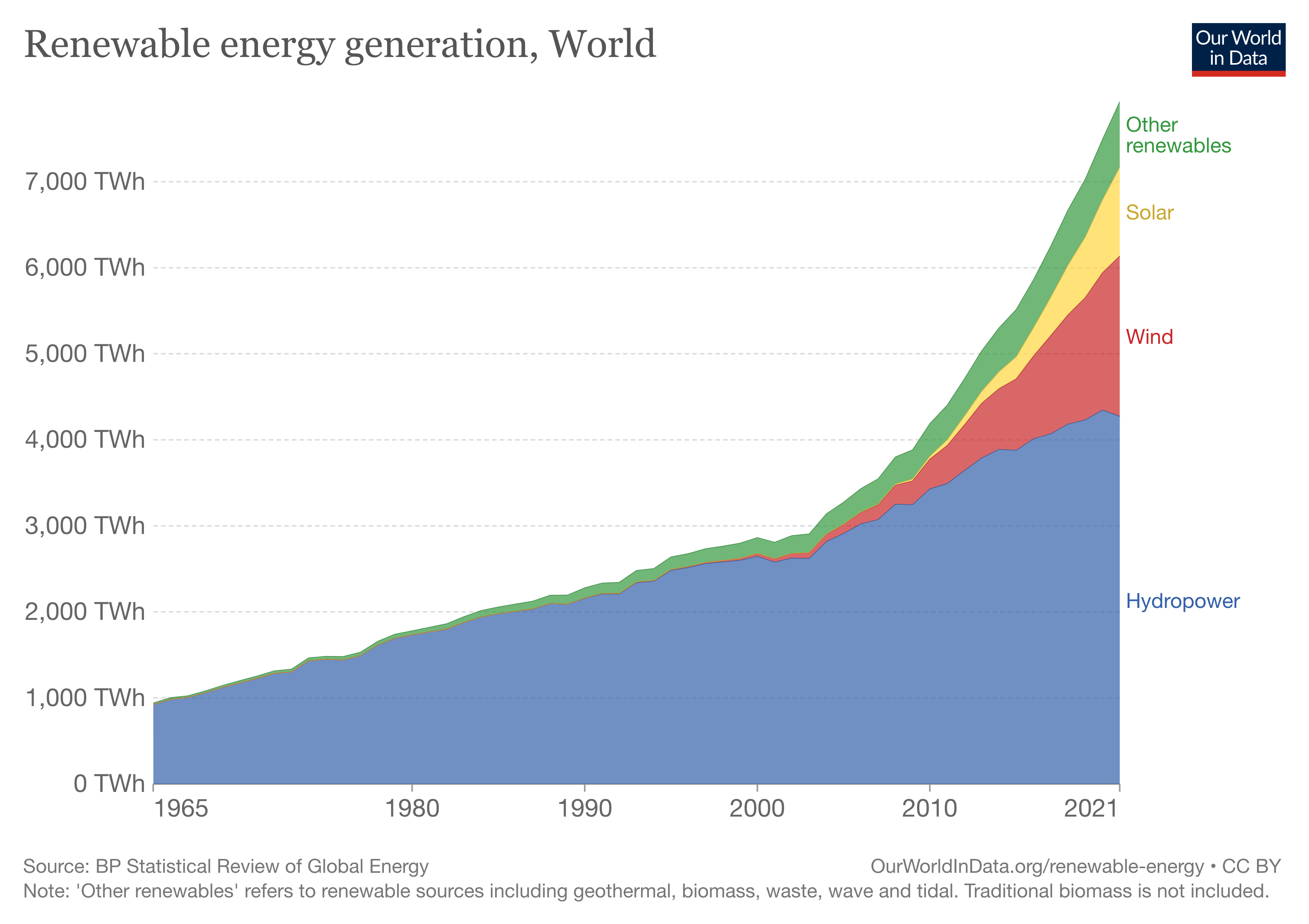
Source: Our World in Data
Sample analytic questions
- How much coal can be saved/emissions can be mitigated if China’s average coal power efficiency increased by 1 percentage point?
- Why combined heat and power saves energy?
Thermodynamics
- Thermodynamic efficiency
- Comparing different technologies
- Thermodynamics provides physic limits
Heat engine
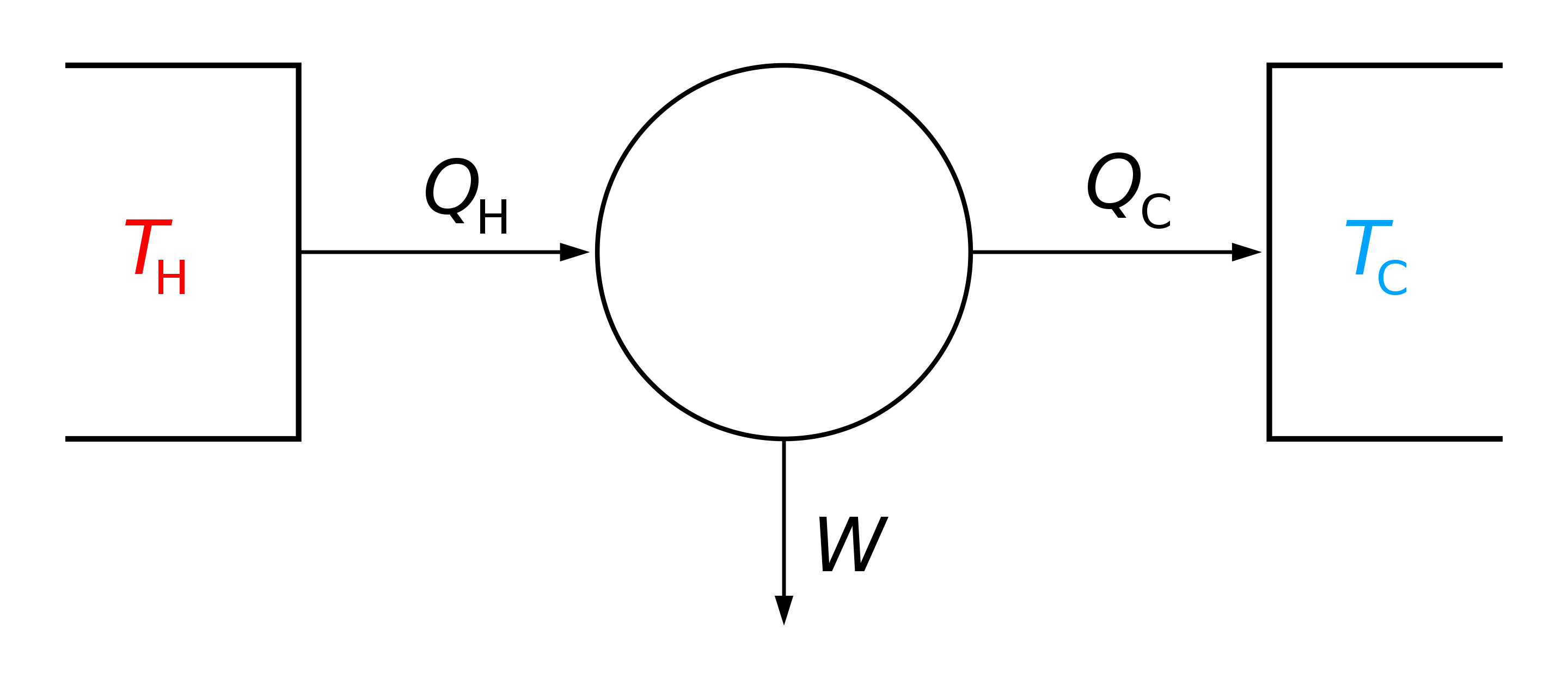
Heat -> Mechanical energy (work)
Source: Wikipedia
Laws of thermodynamics
Zeroth law
“If two systems are each in thermal equilibrium with a third, they are also in thermal equilibrium with each other.”First law
“In a process without transfer of matter, the change in internal energy, \(\Delta U\), of a thermodynamic system is equal to the energy gained as heat, \(Q\), less the thermodynamic work, \(W\), done by the system on its surroundings.”Second law
“Heat does not spontaneously flow from a colder body to a hotter body.”Third law
“As the temperature of a system approaches absolute zero, all processes cease and the entropy of the system approaches a minimum value.”
Read more: Wikipedia
Three efficiencies
- 1st law: actual, thermal efficiency;
\(\eta_1 =\frac{W_{net}}{Q_{in}}=\frac{Q_{high}-Q_{low}}{Q_{high}}=1-\frac{Q_{low}}{Q_{high}}\) - Carnot: maximum possible efficiency;
\(\eta_c =\frac{W_{net}}{Q_{high}}=\frac{T_{high}-T_{low}}{T_{high}}=1-\frac{T_{low}}{T_{high}}\) (Kelvin)
- 2nd law: comparing 1st and Carnot;
\(\eta_2 =\frac{\eta_1}{\eta_c}\)
Read more: Sadi Carnot
A gas turbine engine
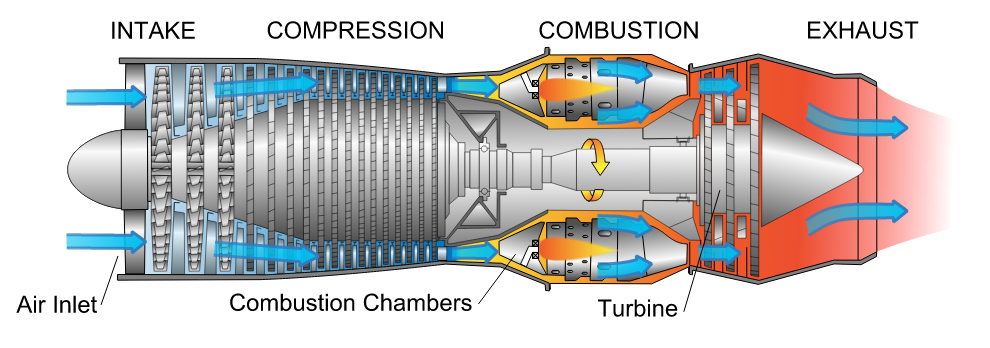
Source: Wikipedia
A steam coal plant
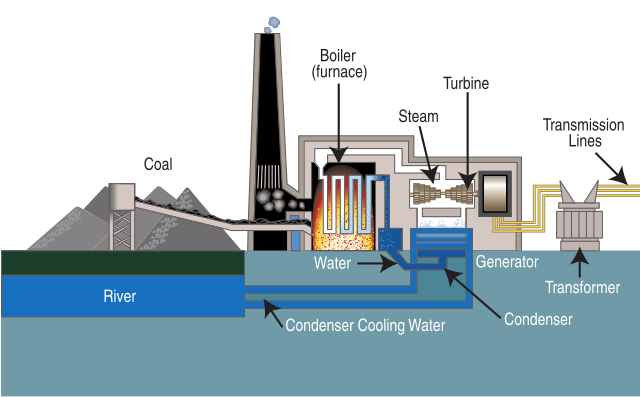
Source: Wikipedia
Brayton cycle vs. Rankine cycle
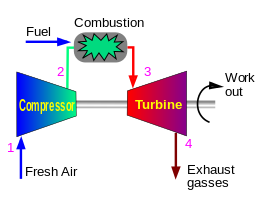
Jet engine, gas turbine
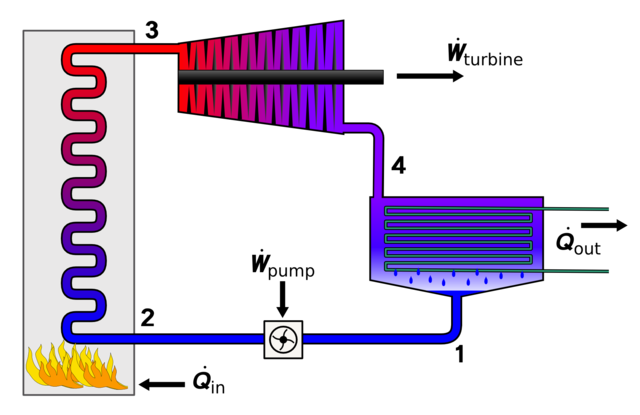
Steam engine, steam turbine
Read more: Wikipedia Brayton cycle and Rankine cycle
Brayton cycle vs. Rankine cycle
| Brayton Cycle | Rankine Cycle |
|---|---|
| Jet, Gas turbine | Steam turbine |
| Open | Open/closed circuits |
| Working fluid in gaseous phase | Working fluid phase change |
Read more: Wikipedia Brayton cycle and Rankine cycle
Largest coal plant in the U.S.
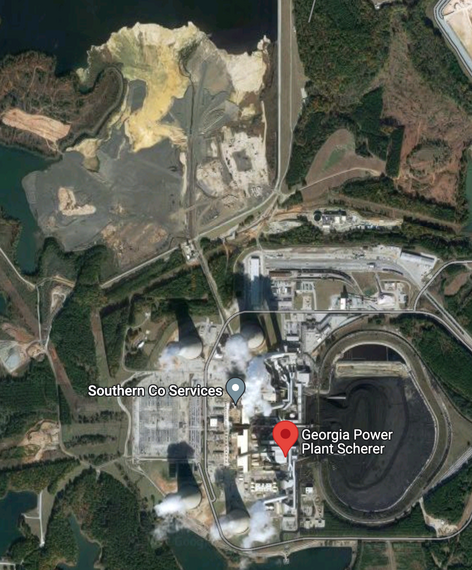
Georgia Power plant Scherer (3,720 MW)
Can you identify the components
- Coal storage
- Generating unit
- Cooling stack
- Bottom ash landfill
- Sub-station
- Transimission lines
- Waste/pollution management
Source: Google Map, read more: Nowhere to hide
Combined cycle
Read more: Tennessee Valley Authority
CCGT Diagram
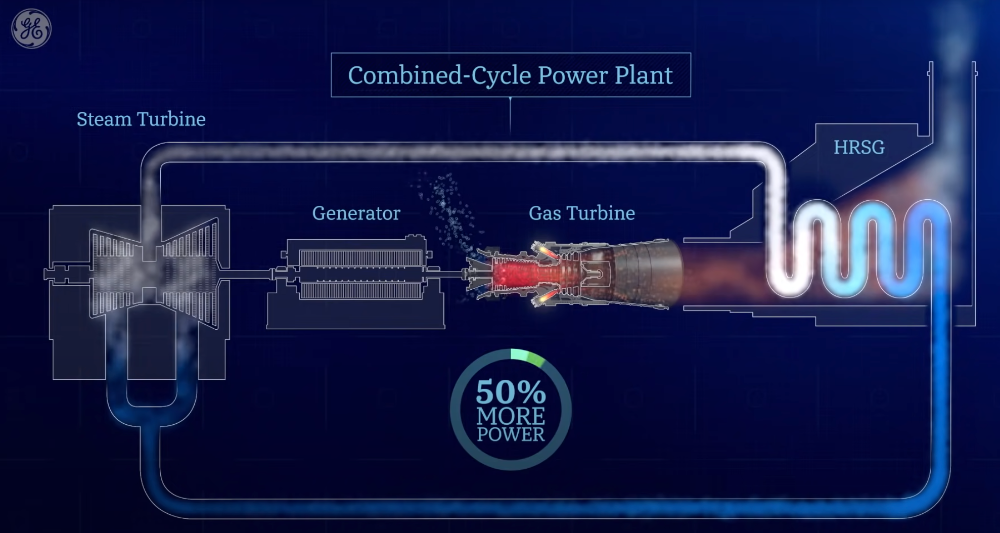
Read more: GE Power
Defining a Rosenfeld Plant
- 500 MW
- c.f.: 70%
- T&D losss: 7%
Results:
3 TWh/year
3 MtCO2/year
NYC electricity use: ~4 TWh/year
Source: Koomey et al. (2010)
Solar
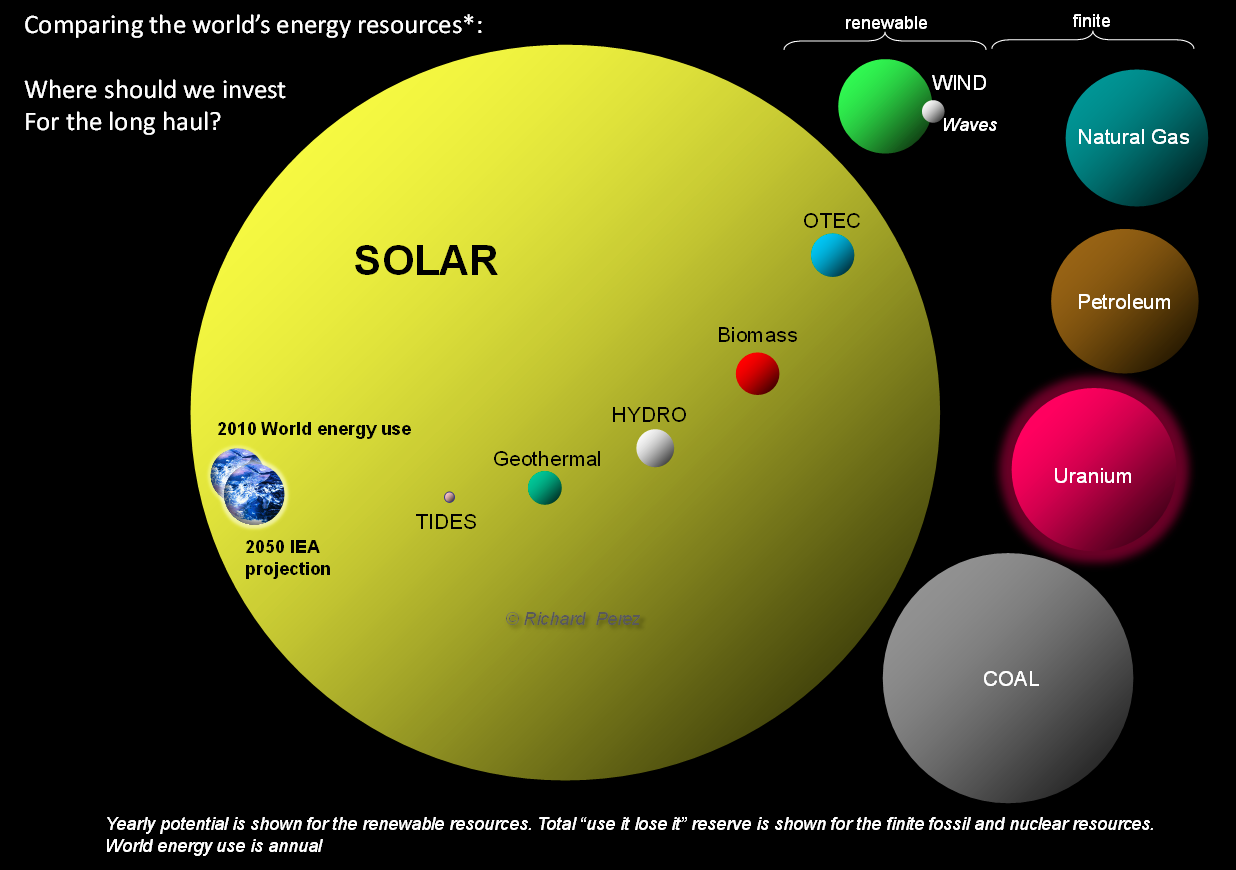
Source: Richard Perez
Solar spectrum
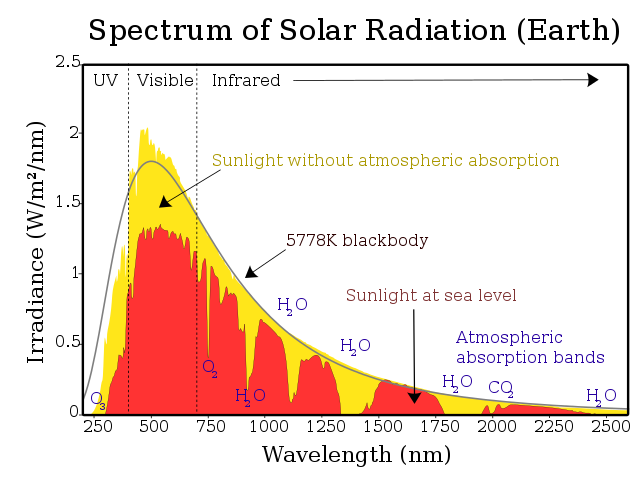
Source: Solar Spectrum
Harvesting the sun

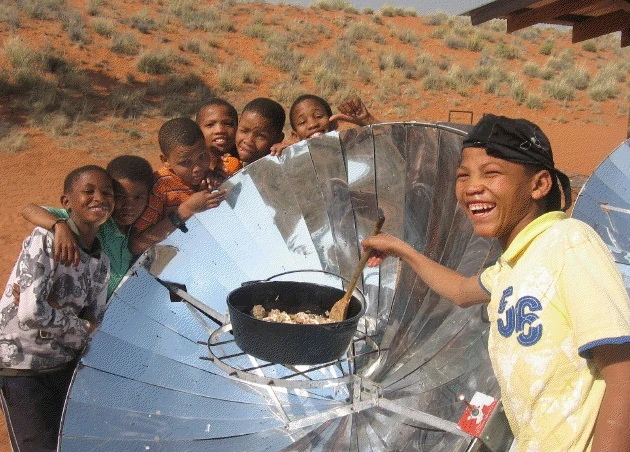
Photo credit: Bristol Energy, Fu Ting; Source: Solar Cooking
Silicon
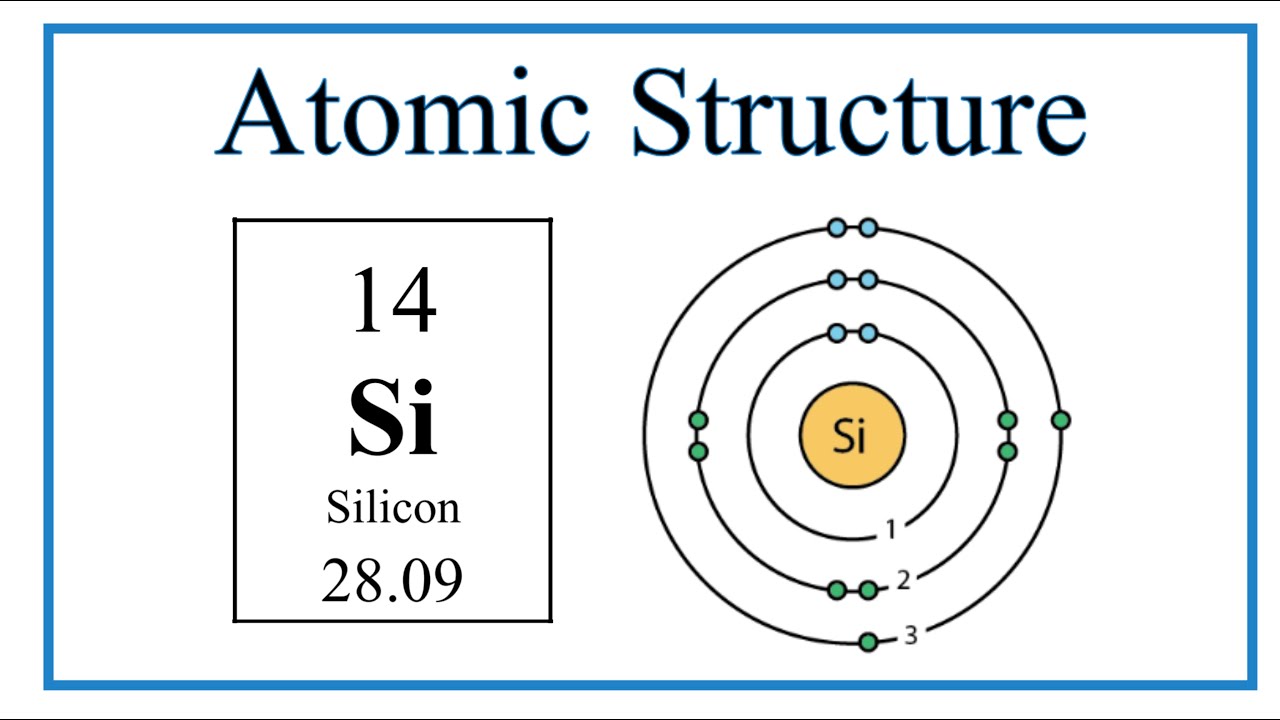
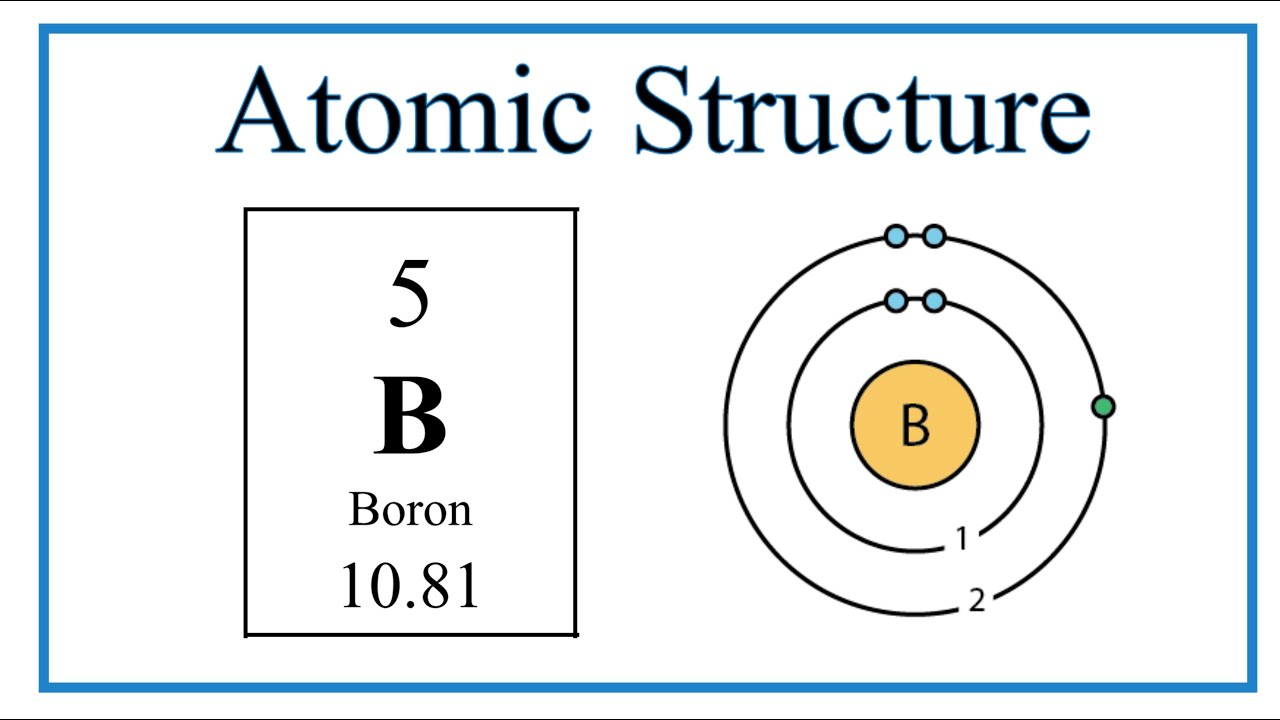
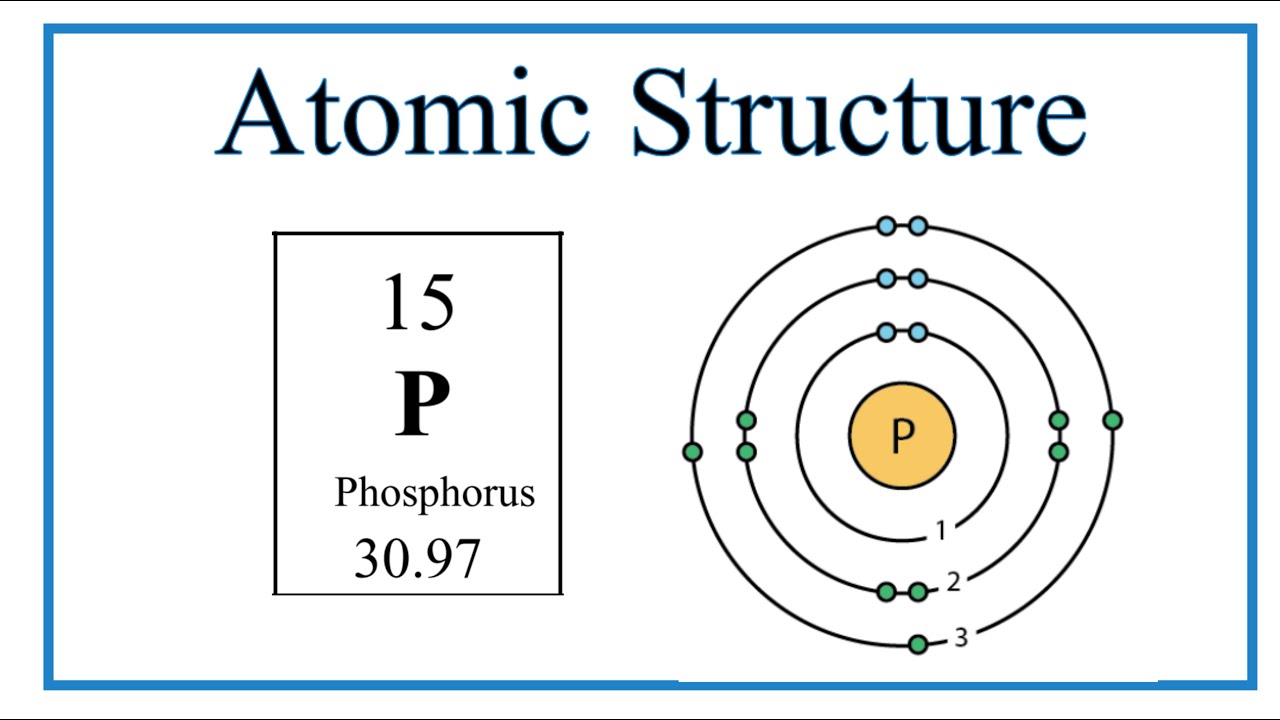
Source: Atomic Structures
P and N type
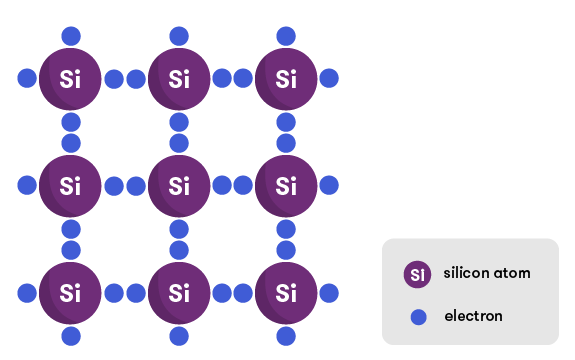
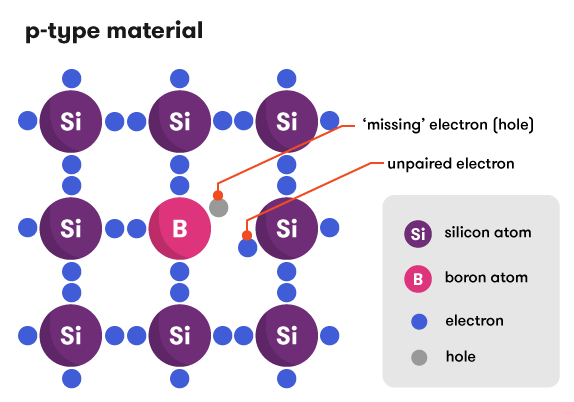
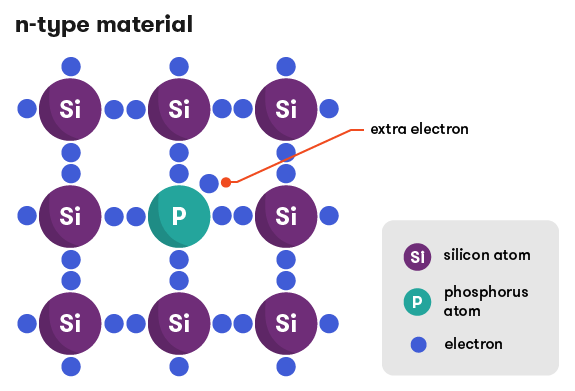
Source: From sunlight to electricity
P-N Junction
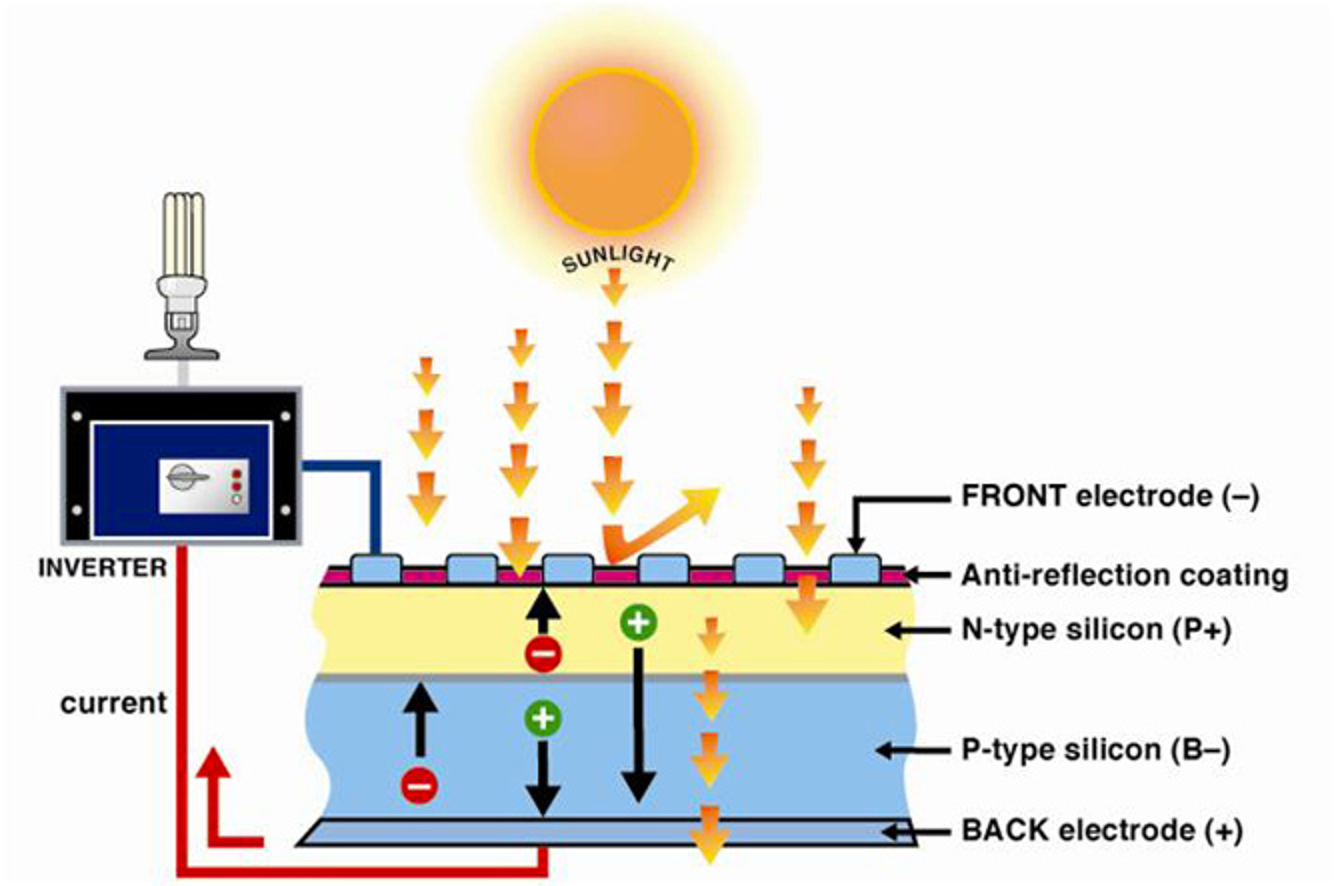
How solar works
Solar irradiance
- Direct normal irradiance (DNI)
- Diffuse horizontal irradiance (DHI)
- Ground reflected irradiance (GRI)
- Global horizontal irradiance (GHI)
- Plane-of-array irradiance (POA)
GHI=DNI+DHI+GRI
POA = GHI \(\times \cos \theta\)
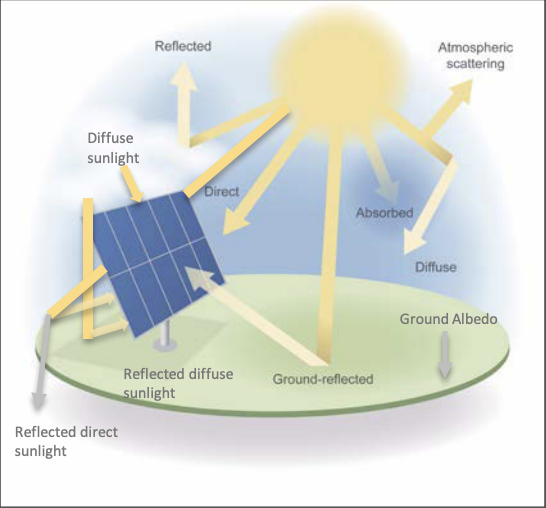
Source: Manajit Sengupta, Aron Habte, NREL
Key corrections
- Solar position at any time of day: altitude angle, latitude, zaimuth angle, hour angle
- Radiation: direct beam, diffusion, reflected
- Tracking: fixed, 1-axis, 2-axis
Read more: Masters (2013)
The quest for efficiency
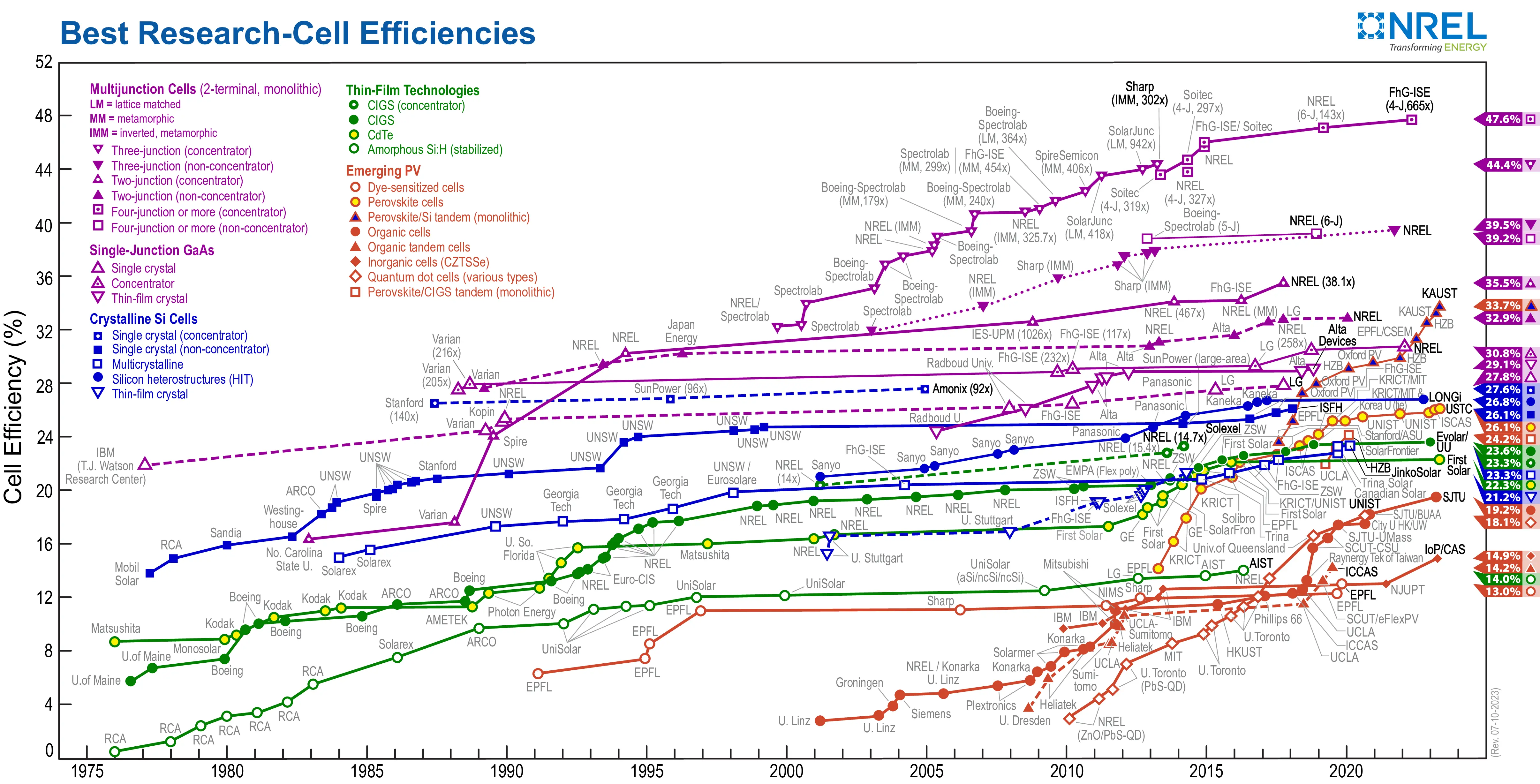
Read more: NREL, Best Research-Cell Efficiency Chart
Global and U.S. distribution
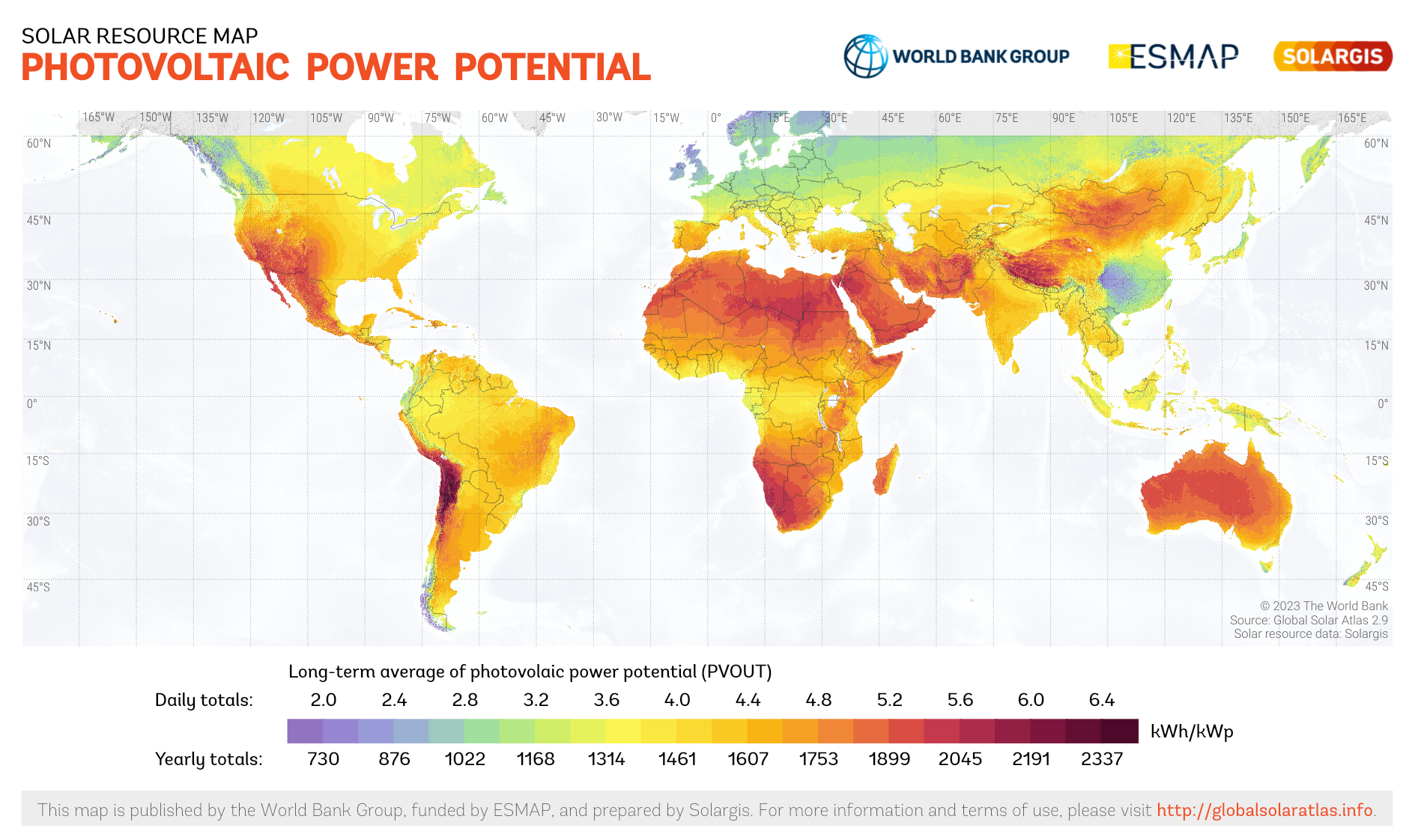
Source: Global Solar Atlas
Air pollution and dust
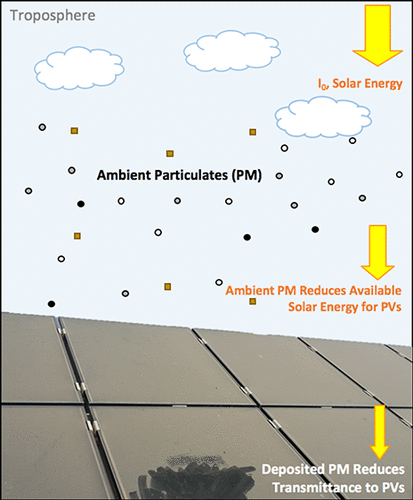
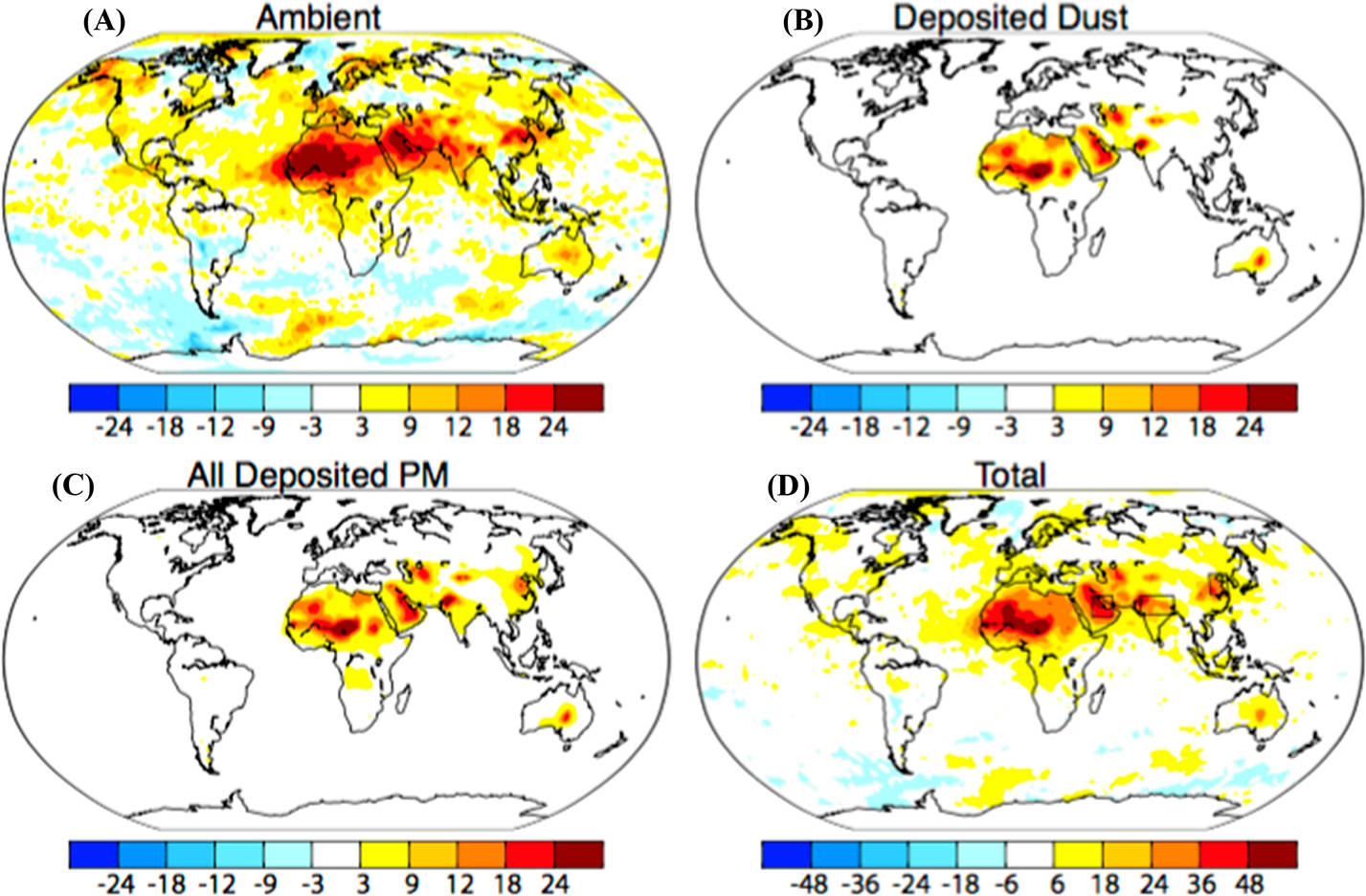
Source: Bergin et al. (2017)
Climate change impact
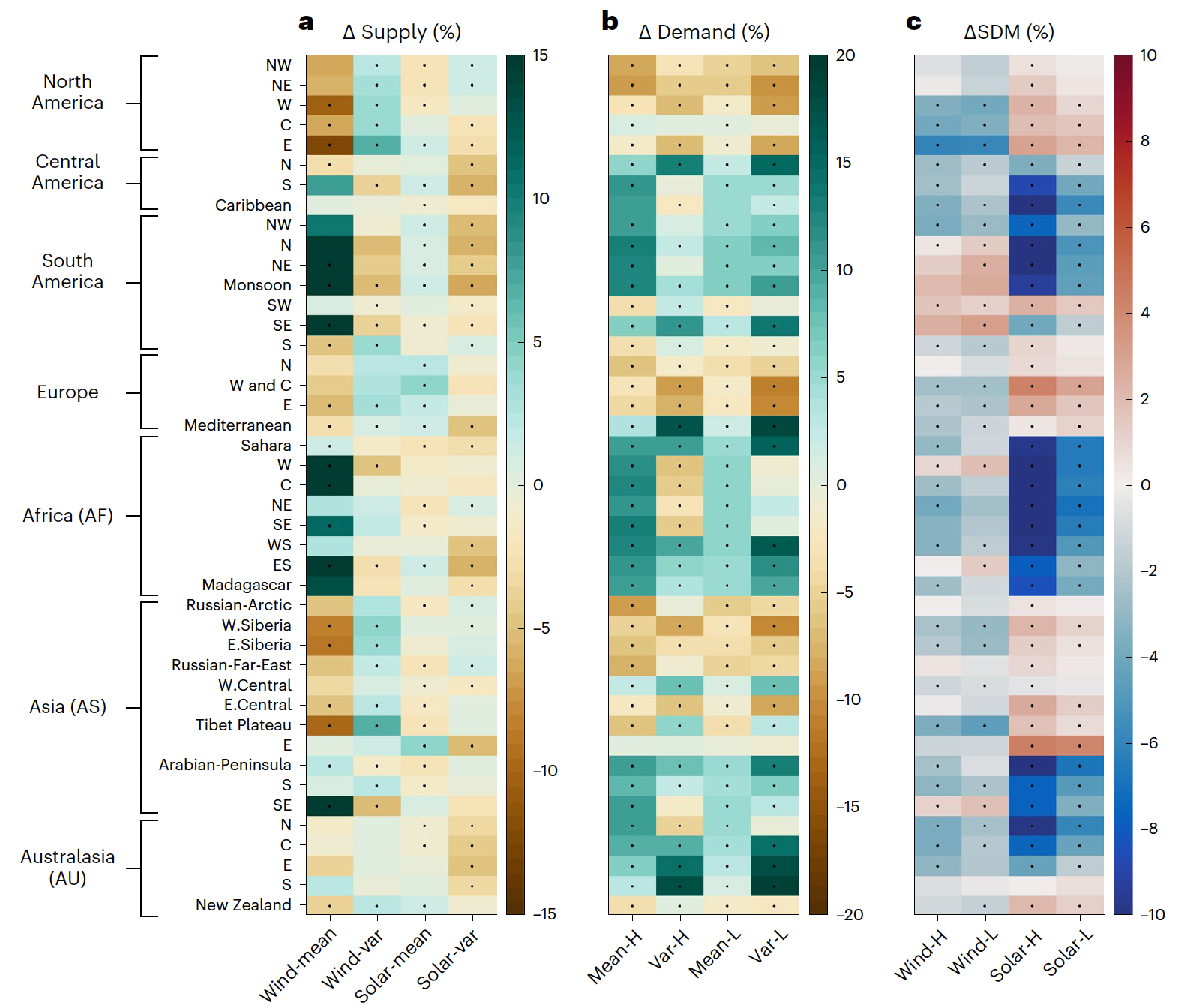
Source: Liu et al. (2023)
Prioritize solar installation
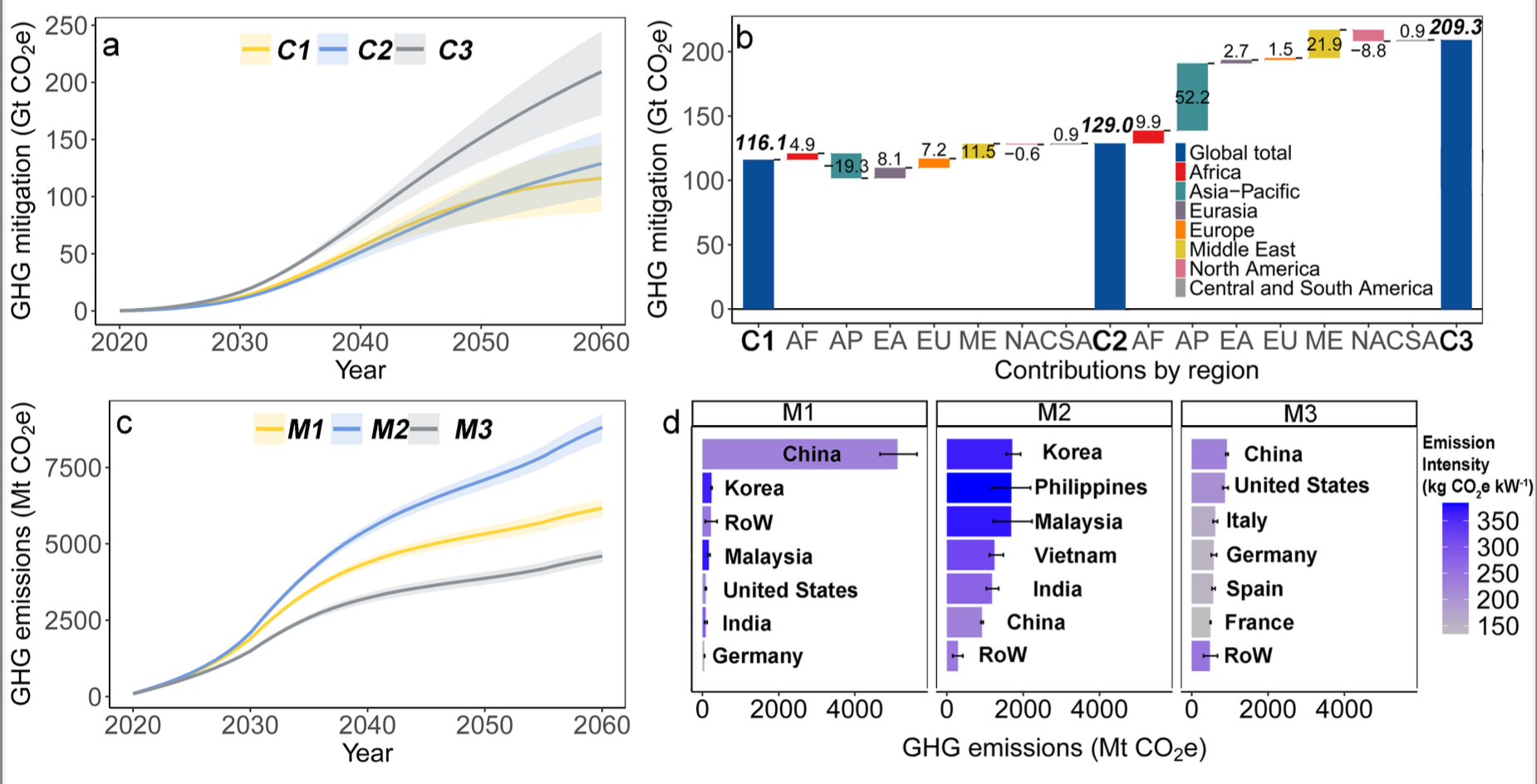
Source: Chen et al. (2023)
Solar thermal: CSP
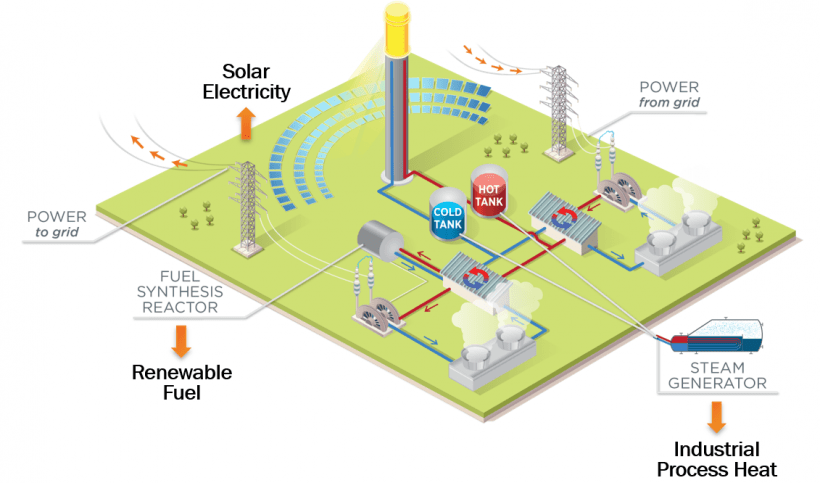
Source: DOE
Pros and Cons
| Pros | Cons |
|---|---|
| Renewables | Variable & integration |
| Low emissions | Land use |
| Low costs | Distribution |
Wind
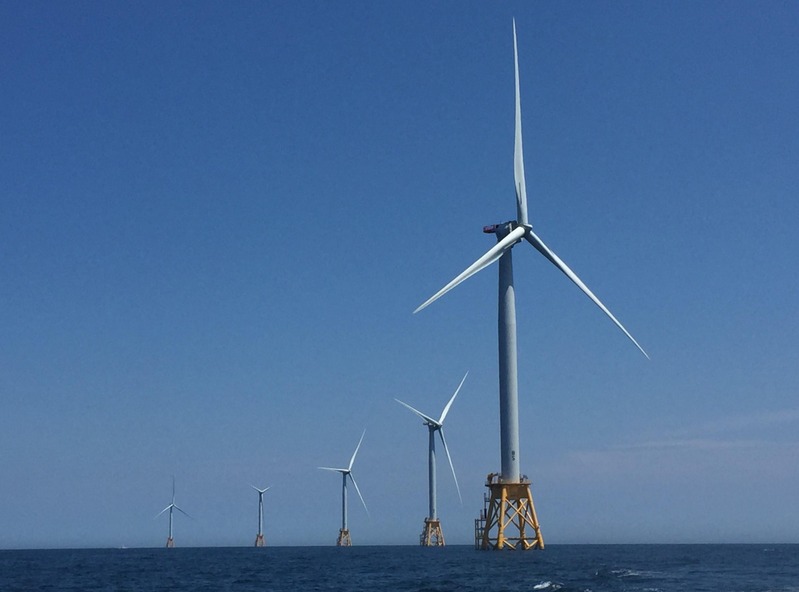
\(P=\frac{1}{2}\rho \pi r^2 v^3\)
Where,
\(\rho\) = Air Density (\(kg/m^3\))
\(A\) = Swept Area (m2) = \(\pi r^2\)
\(v\) = Wind Speed (m/s)
\(P\) = Power (W)
Photo by Gang He, Block Island Offshore Wind Farm
Betz’s law: 59.3%
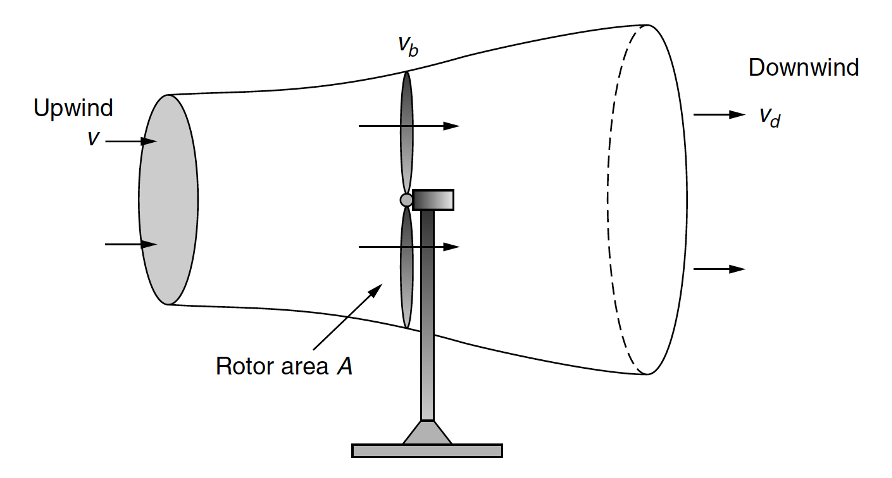
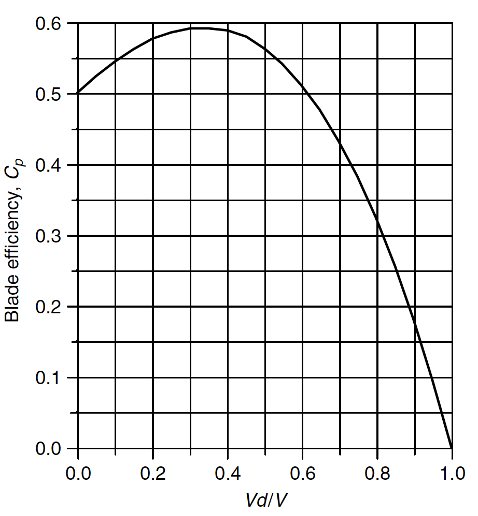
Source: Masters (2013)
Average power
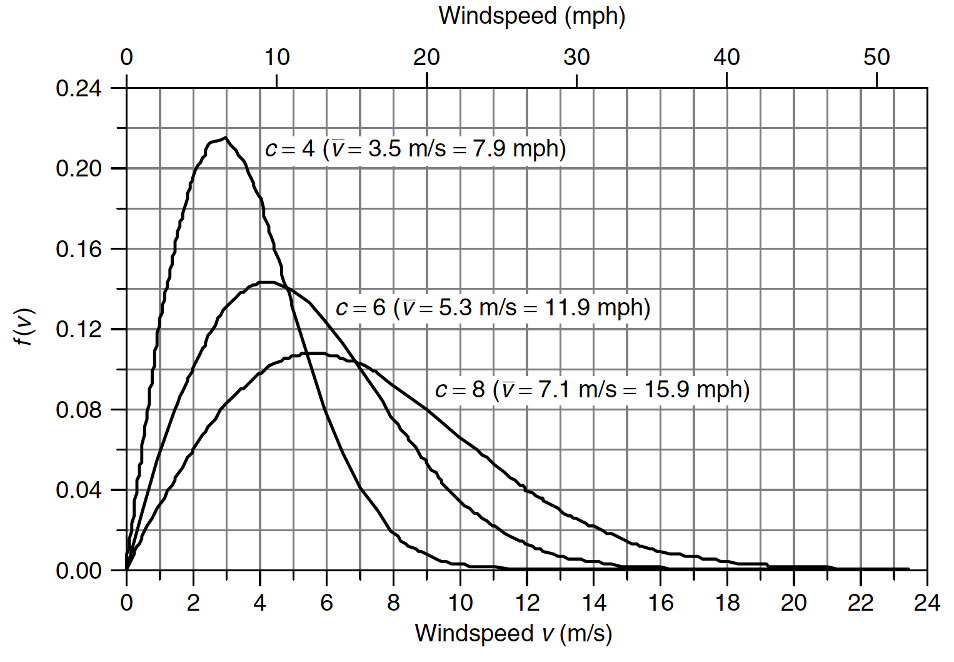
Rayleigh (a special type of Weibull) distribution
\(f(v)=\frac{2v}{c^2}\exp [-(\frac{v}{c})^2]\)
\(\bar{P}=\frac{6}{\pi}\cdot \frac{1}{2}\rho \pi r^2 (\bar{v})^3=1.91P\)
Use average power when dealing with average wind speed
Read more: Masters (2013)
Power curve
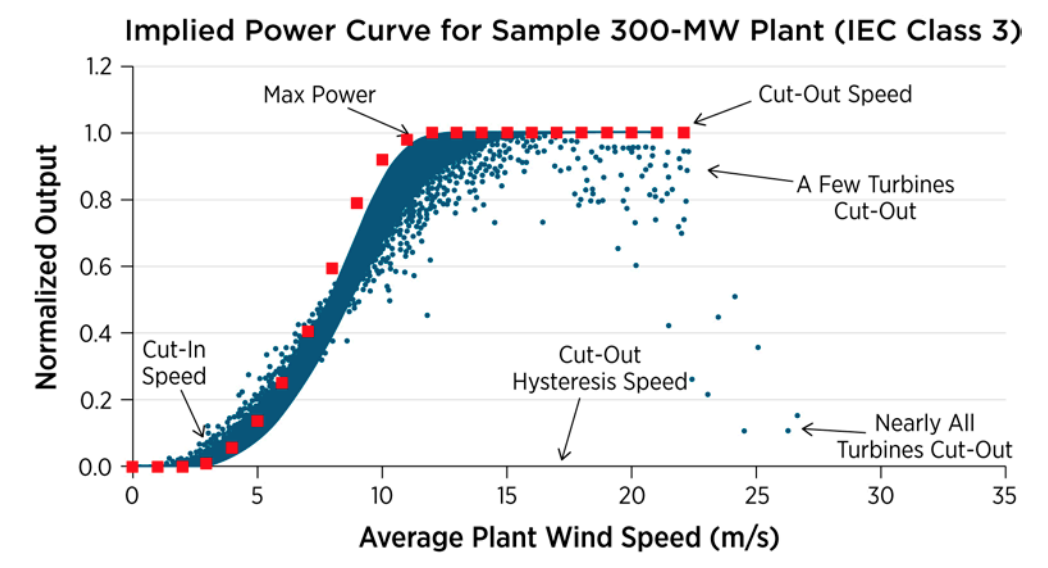
Read more: NREL, Validation of Power Output for the WIND Toolkit
Important corrections
- Temperature: \(\rho = \frac{P\times M.W. \times 10^{-3}}{RT}=\frac{1 atm\times 28.97 g/mol \times 10^{-3}kg/g}{8.2056\times 10^{-5}m^3\cdot atm/(K\cdot mol)\times(273.15+T)K}\)
- Altitude: \(P=P_0 e^{-1.185\times 10^{-4}H}\) (H is elevation in meters)
- Tower height: \(\frac{v}{v_0}=(\frac{H}{H_0})^\alpha\) (\(\alpha\) is the friction coefficient)
Read more: Masters (2013)
Class of wind resources
| Class | 10 m (33 ft) | 50 m (164 ft) | ||
|---|---|---|---|---|
| Wind power density (W/m2) | Speed m/s (mph) | Wind power density (W/m2) | Speed m/s (mph) | |
| 1 | 0 - 100 | 0 - 4.4 (0 - 9.8) | 0 - 200 | 0 - 5.6 (0 - 12.5) |
| 2 | 100 - 150 | 4.4 - 5.1 (9.8 - 11.5) | 200 - 300 | 5.6 - 6.4 (12.5 - 14.3) |
| 3 | 150 - 200 | 5.1 - 5.6 (11.5 - 12.5) | 300 - 400 | 6.4 - 7.0 (14.3 - 15.7) |
| 4 | 200 - 250 | 5.6 - 6.0 (12.5 - 13.4) | 400 - 500 | 7.0 - 7.5 (15.7 - 16.8) |
| 5 | 250 - 300 | 6.0 - 6.4 (13.4 - 14.3) | 500 - 600 | 7.5 - 8.0 (16.8 - 17.9) |
| 6 | 300 - 400 | 6.4 - 7.0 (14.3 - 15.7) | 600 - 800 | 8.0 - 8.8 (17.9 - 19.7) |
| 7 | 400 - 1000 | 7.0 - 9.4 (15.7 - 21.1) | 800 - 2000 | 8.8 - 11.9 (19.7 - 26.6) |
Source: NREL
Global wind power density map
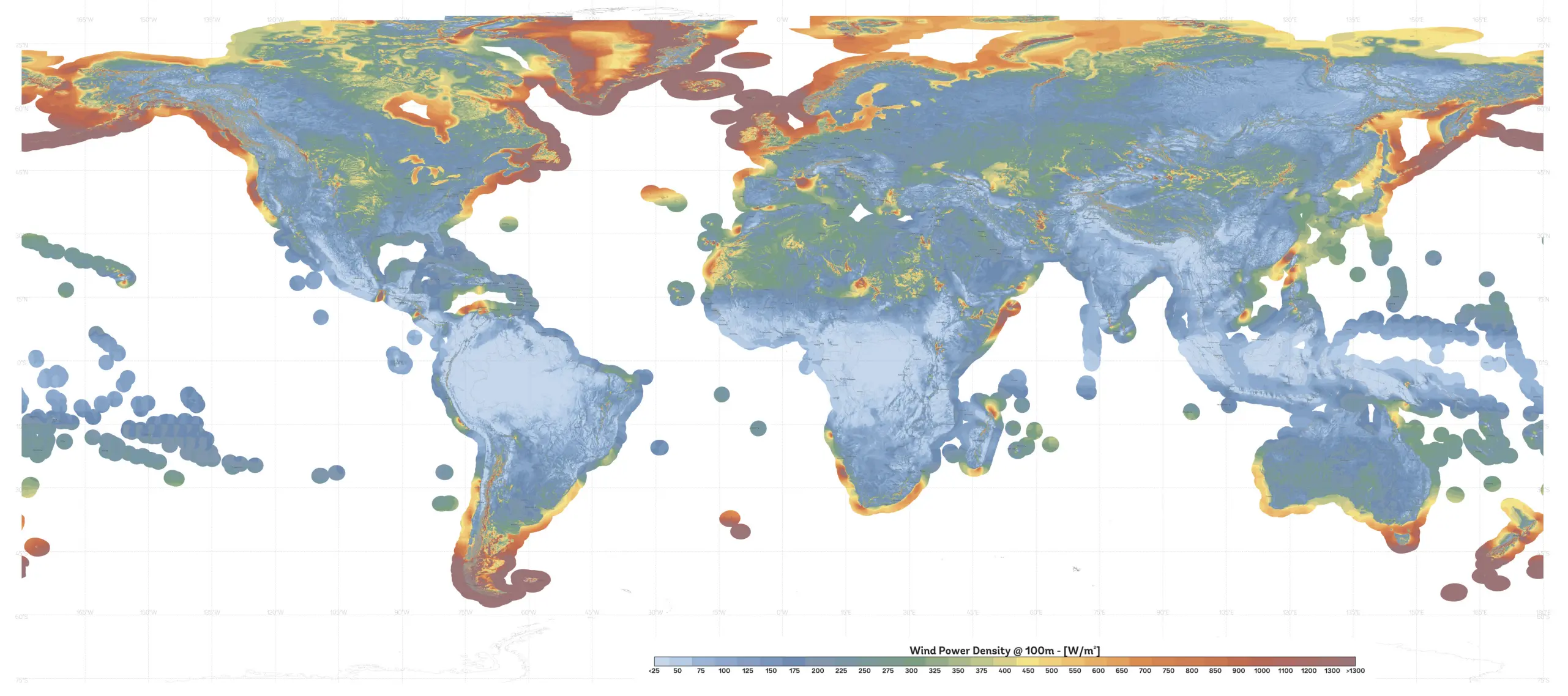
Source: Global Wind Atlas
Higher and bigger
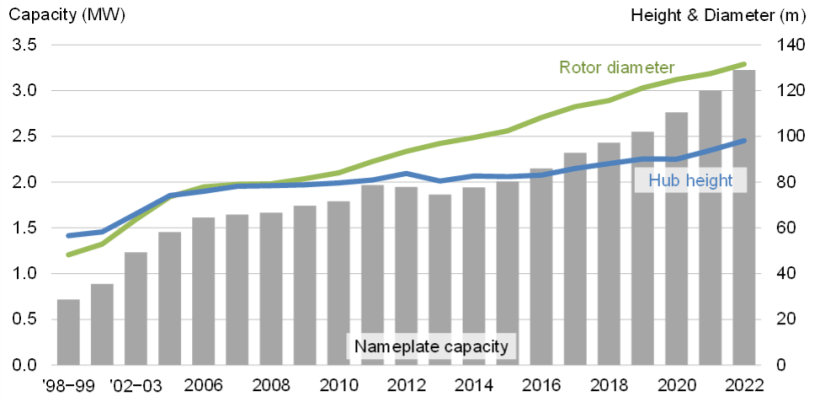
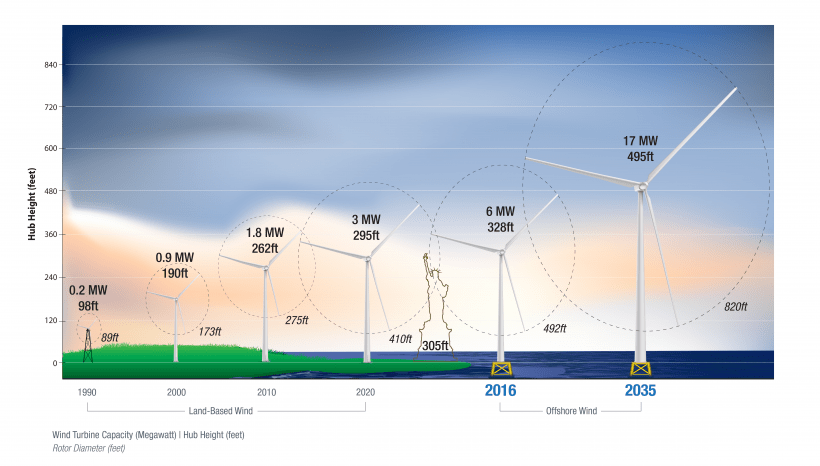
Offshore wind
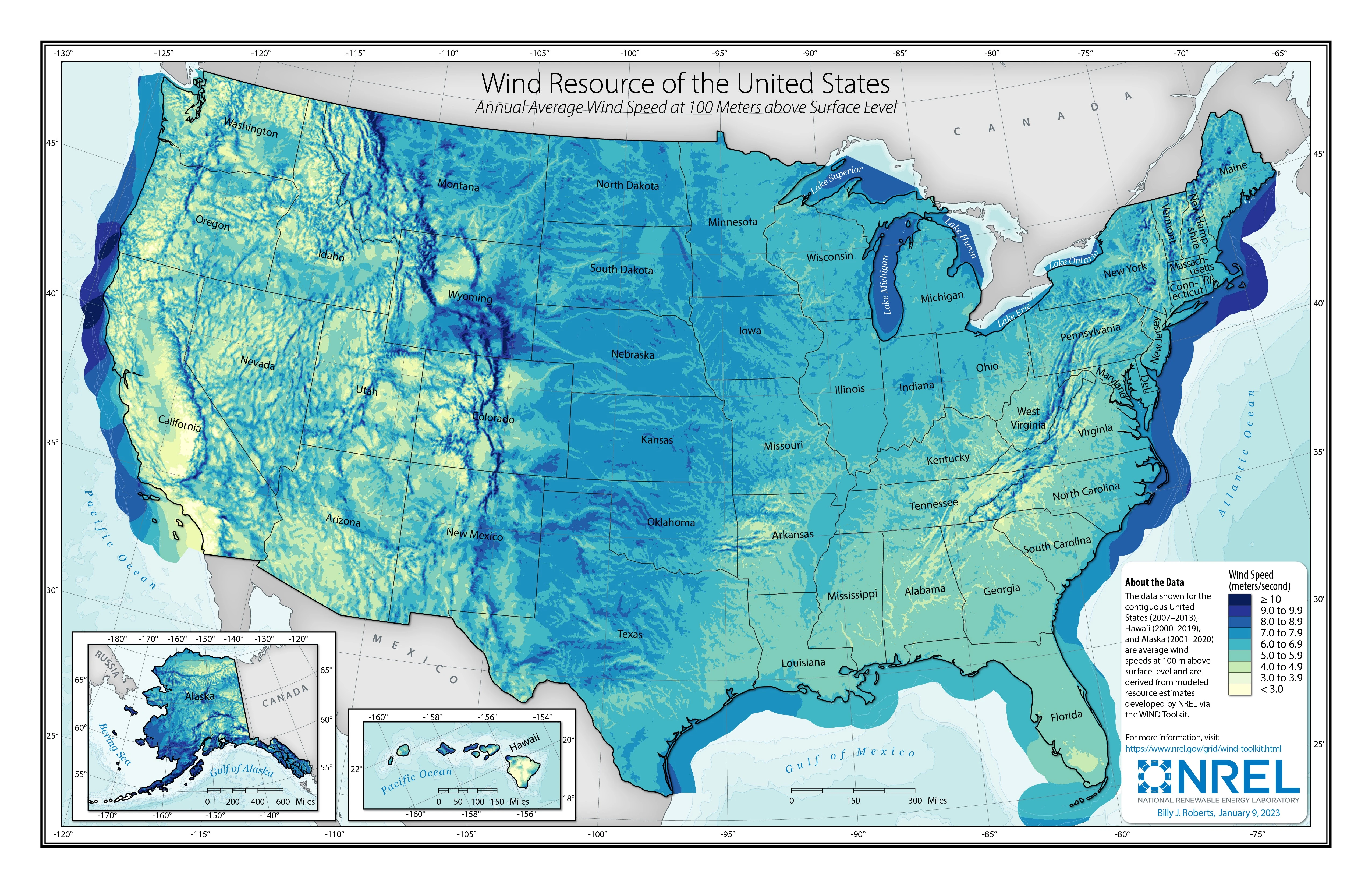
Source: DOE, Offshore Wind Energy
Challenges
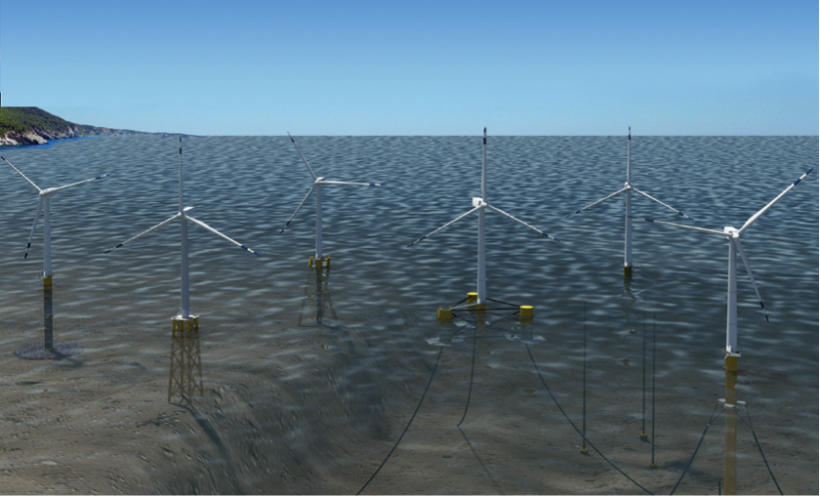
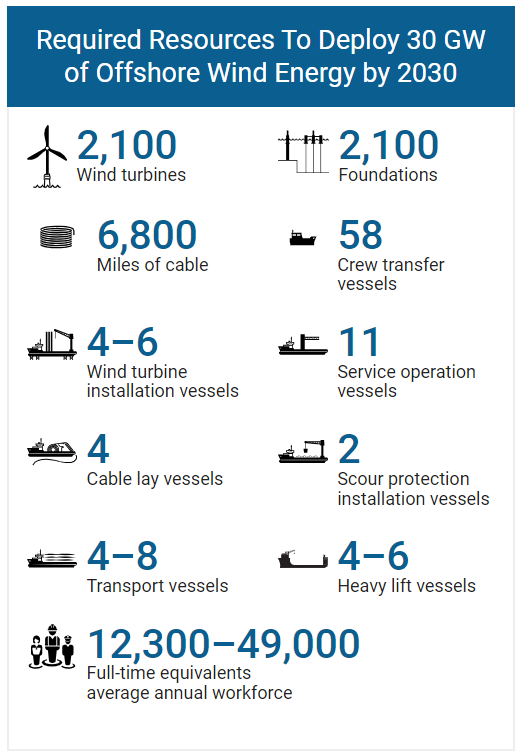
Source: DOE, Top 10 Things You Didn’t Know About Offshore Wind Energy; NREL, Supply Chain Road Map
Low speed wind
Smaller generator. \(\rightarrow\) Decreased generator weight and cost.
Operating at higher capacity in lower wind speeds. \(\rightarrow\) Greater generator efficiency.
Decreased tower head mass. \(\rightarrow\) Decreased foundation and tower costs.
Decreased PE system rating. \(\rightarrow\) Decreased PE system costs
Source: Low Speed Wind Turbines
Pros and Cons
| Pros | Cons |
|---|---|
| Renewables | Variable & integration |
| Low emissions | Land use/NIMBY |
| Low costs | Distribution |
Unexpected benefits
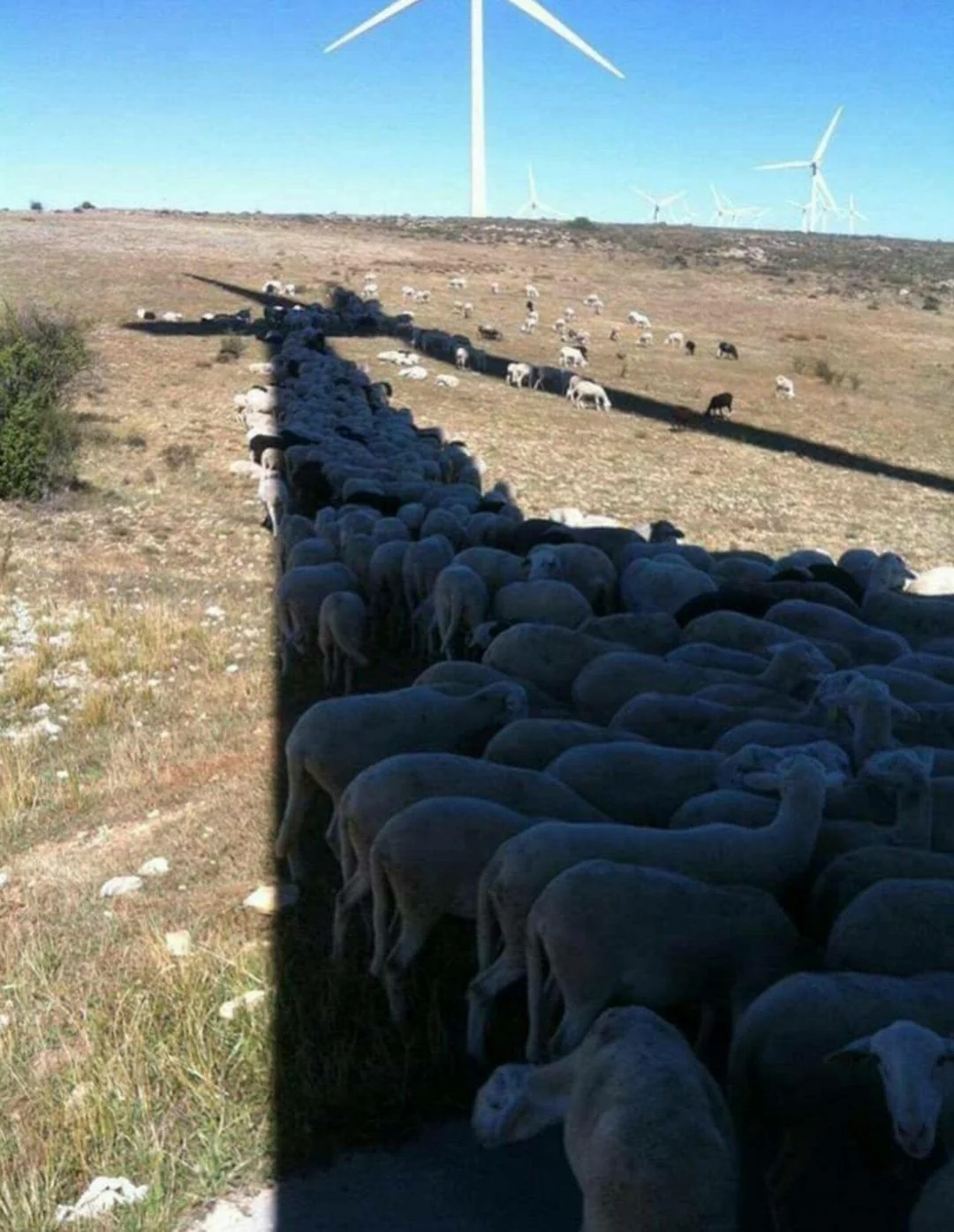
Source: Reddit
Hybrid power systems
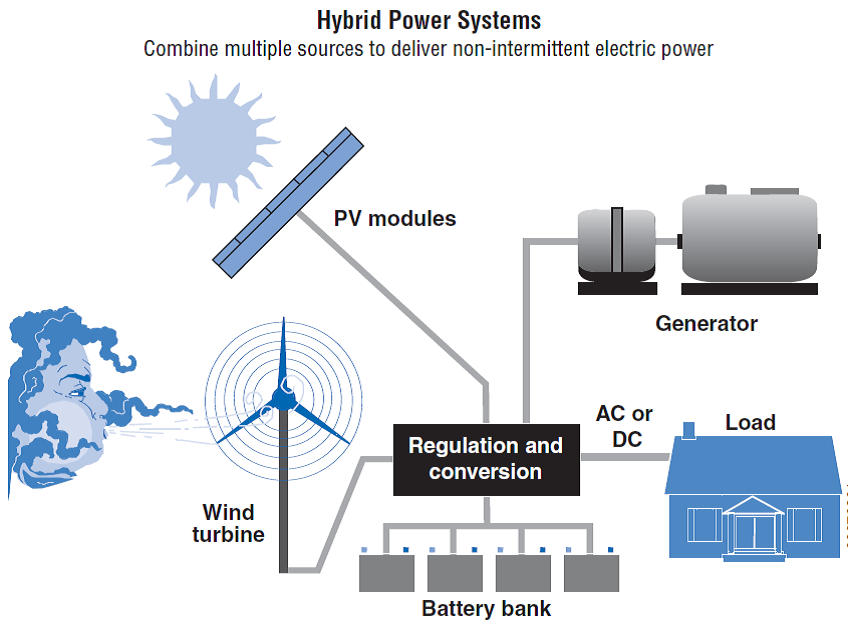
Source: Small Wind Guidebook